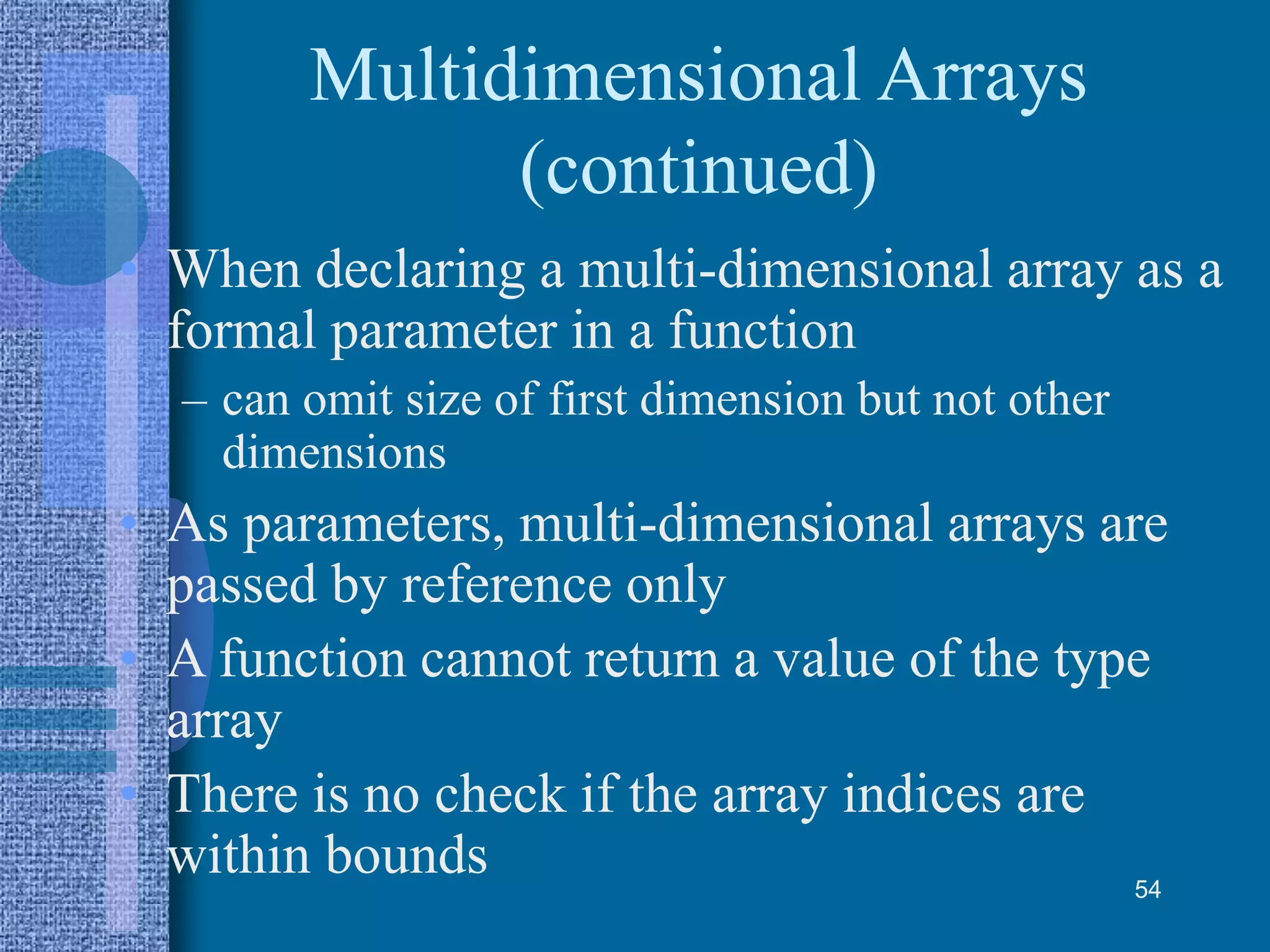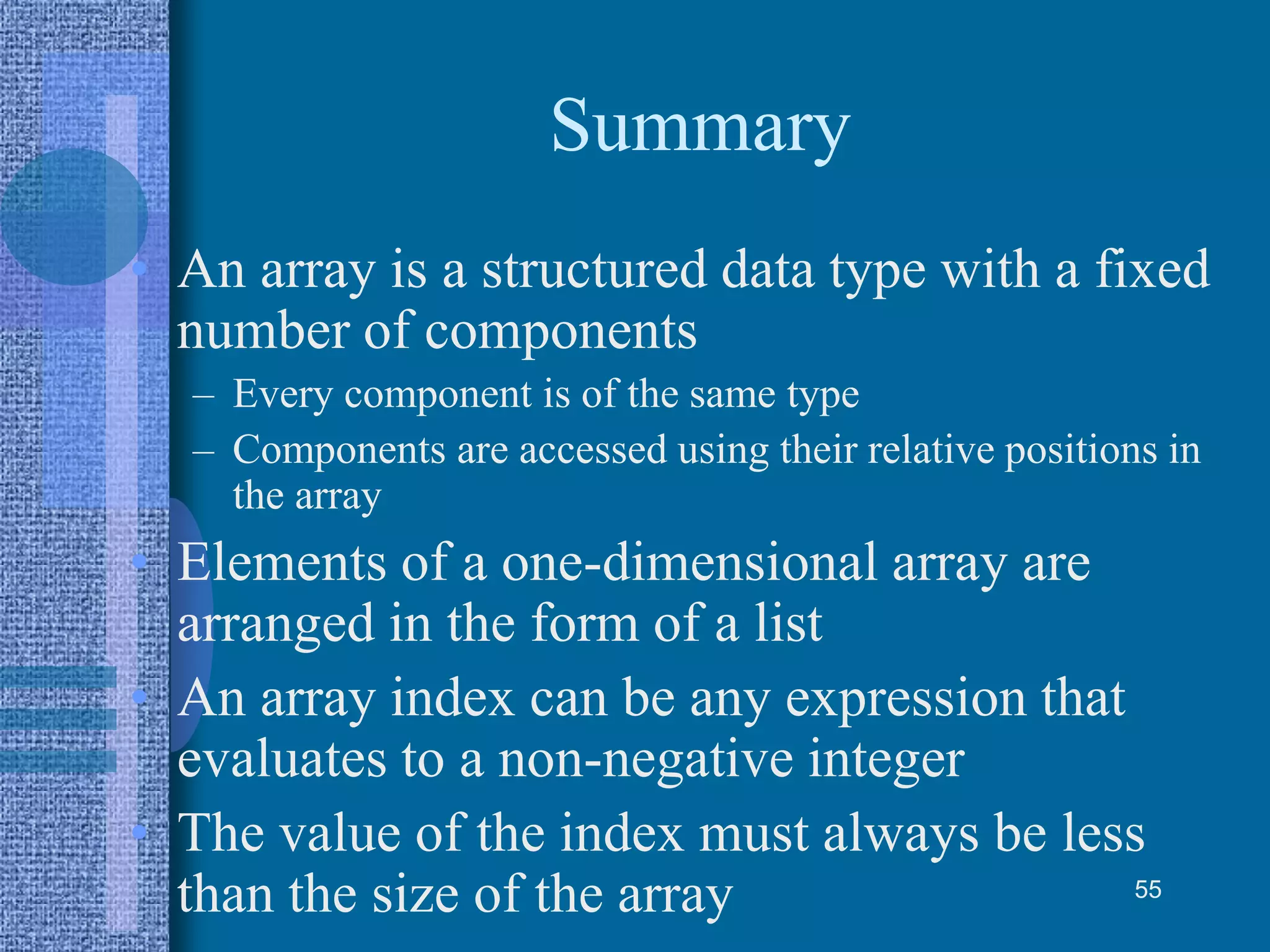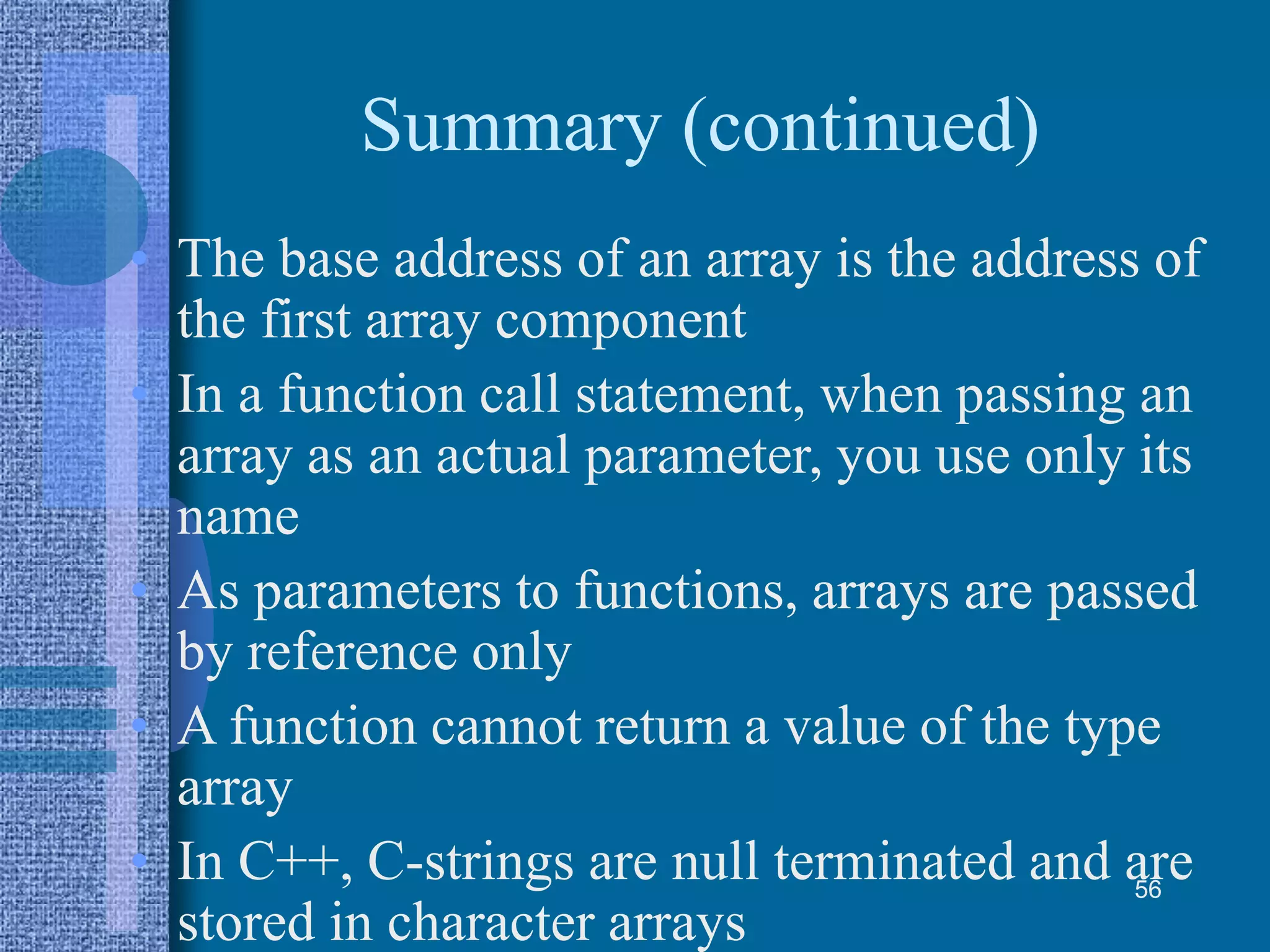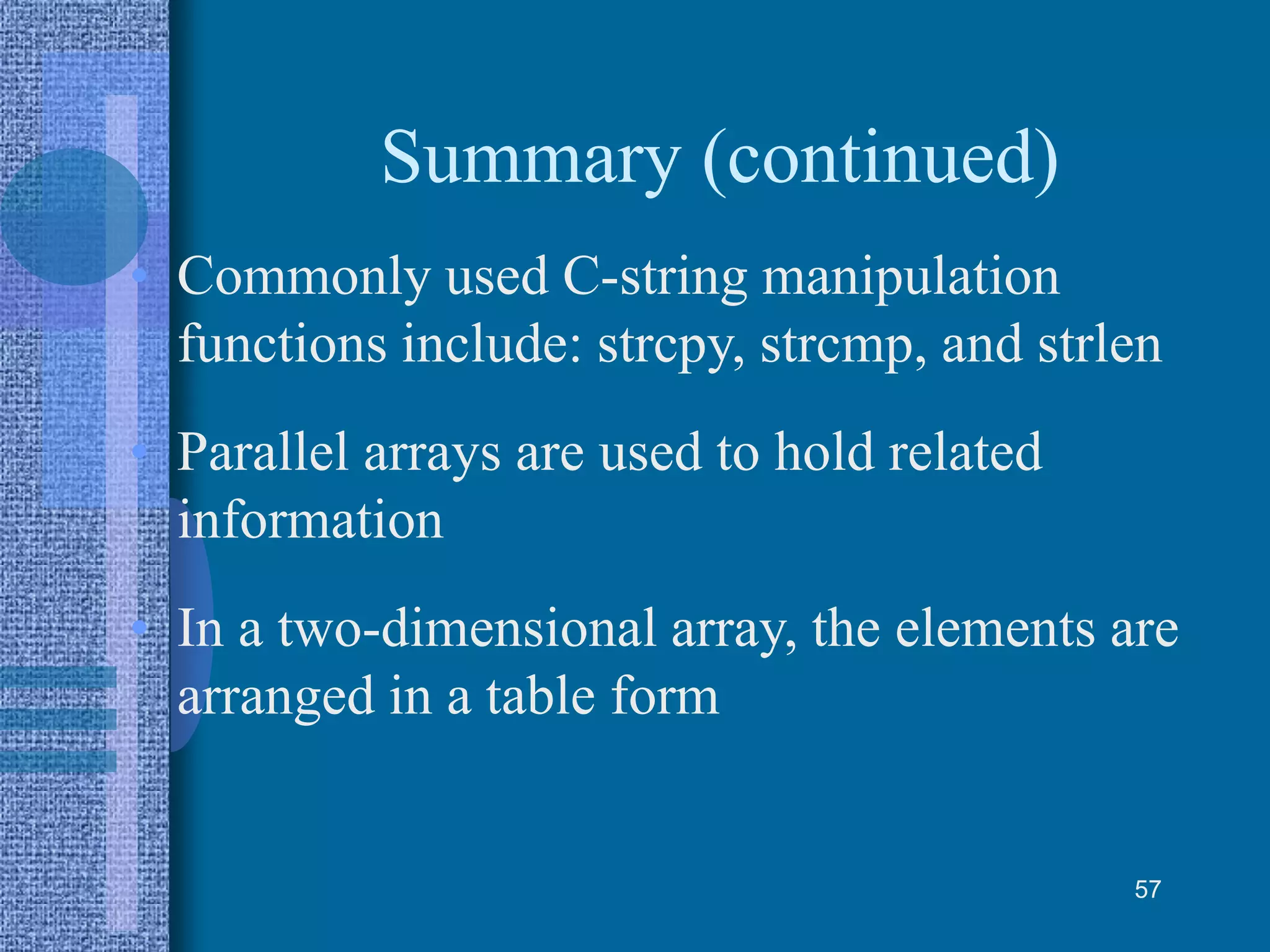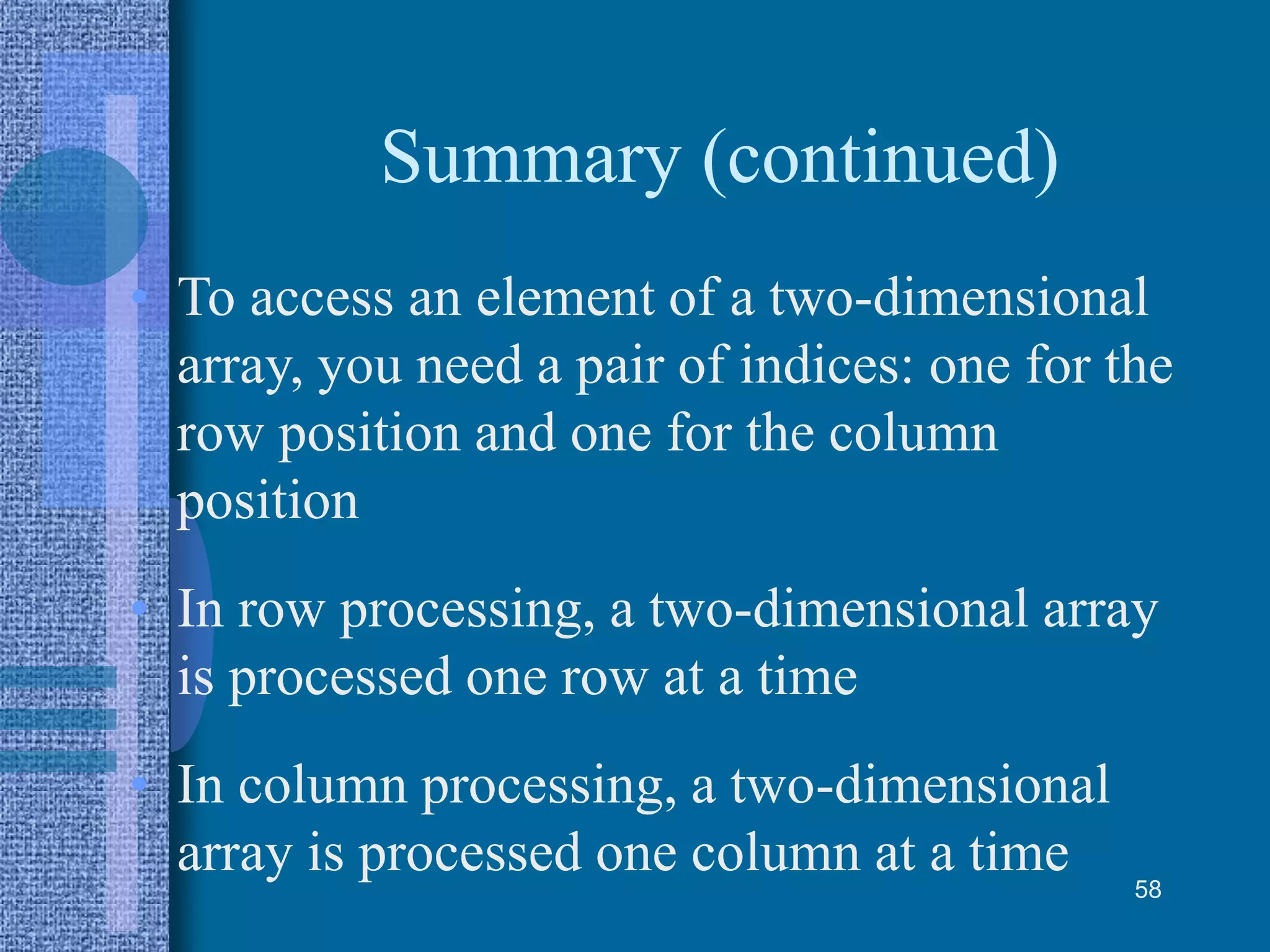This document discusses arrays in C++. It defines arrays as fixed-size collections of elements of the same type. One-dimensional arrays are arranged in list form, accessed using indices, and can be initialized partially. Two-dimensional arrays are like tables with rows and columns accessed using index pairs. Arrays are passed by reference in functions. The document also covers parallel arrays, C-strings stored in character arrays, and processing arrays by rows and columns.

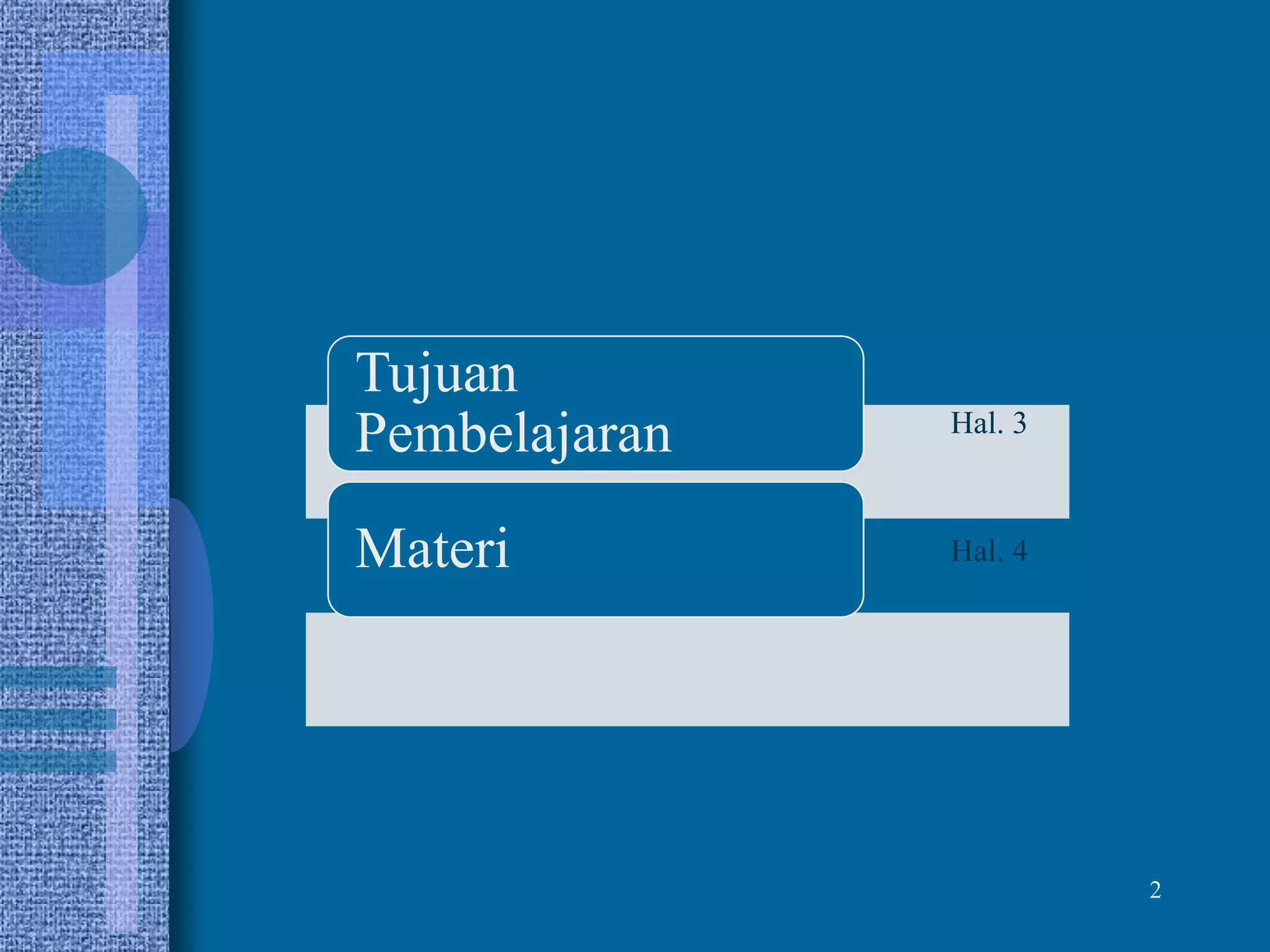
![Arrays
• Array - a collection of a fixed number of
components wherein all of the components
have the same data type
• One-dimensional array - an array in which
the components are arranged in a list form
• The general form of declaring a one-
dimensional array is:
dataType arrayName[intExp];
where intExp is any expression that evaluates to a
positive integer 3](https://image.slidesharecdn.com/array-200408105701/75/Array-3-2048.jpg)
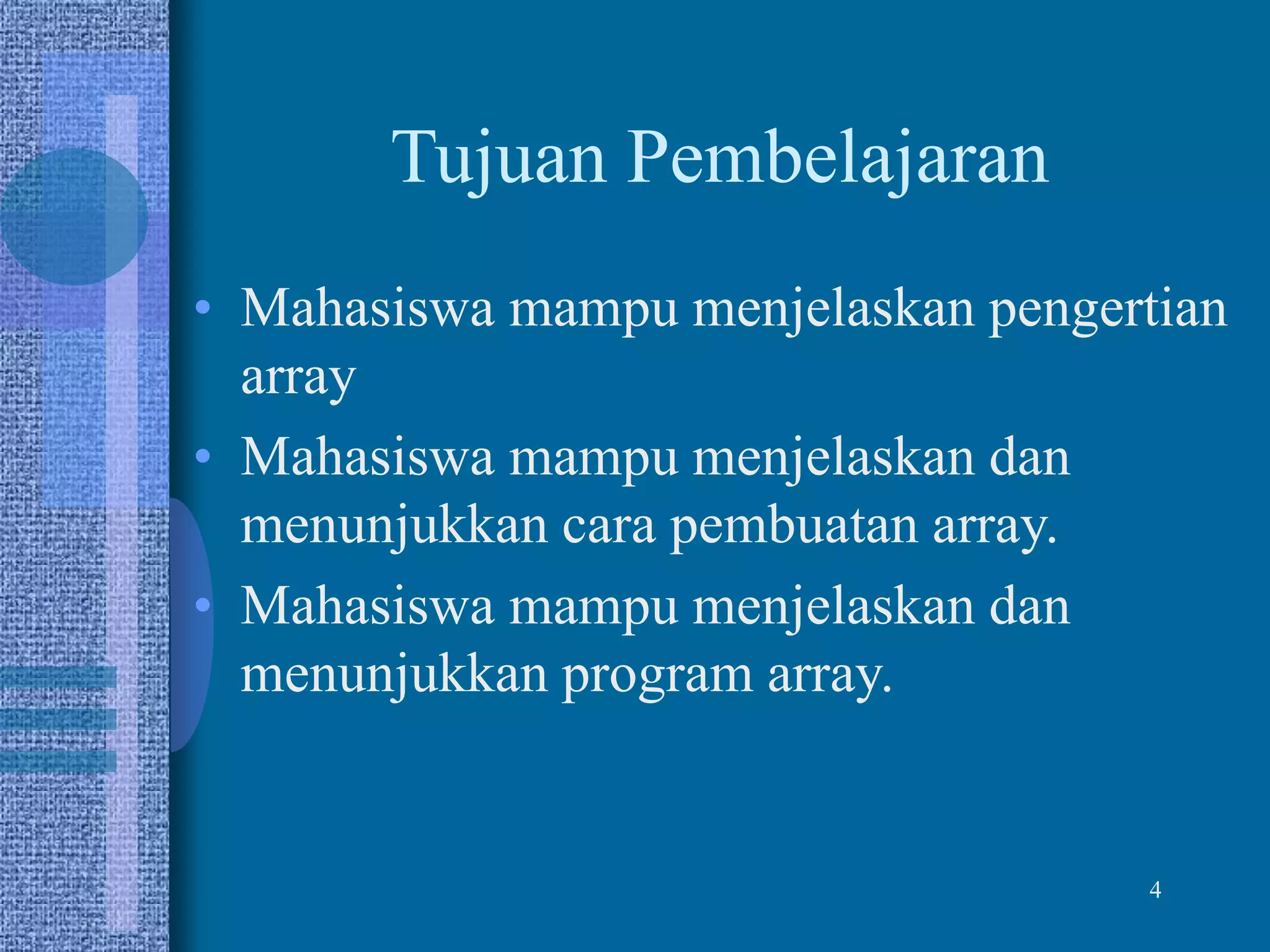
![Declaring an array
• The statement
int num[5];
declares an array num of 5 components of
the type int
• The components are num[0], num[1],
num[2], num[3], and num[4]
5](https://image.slidesharecdn.com/array-200408105701/75/Array-5-2048.jpg)
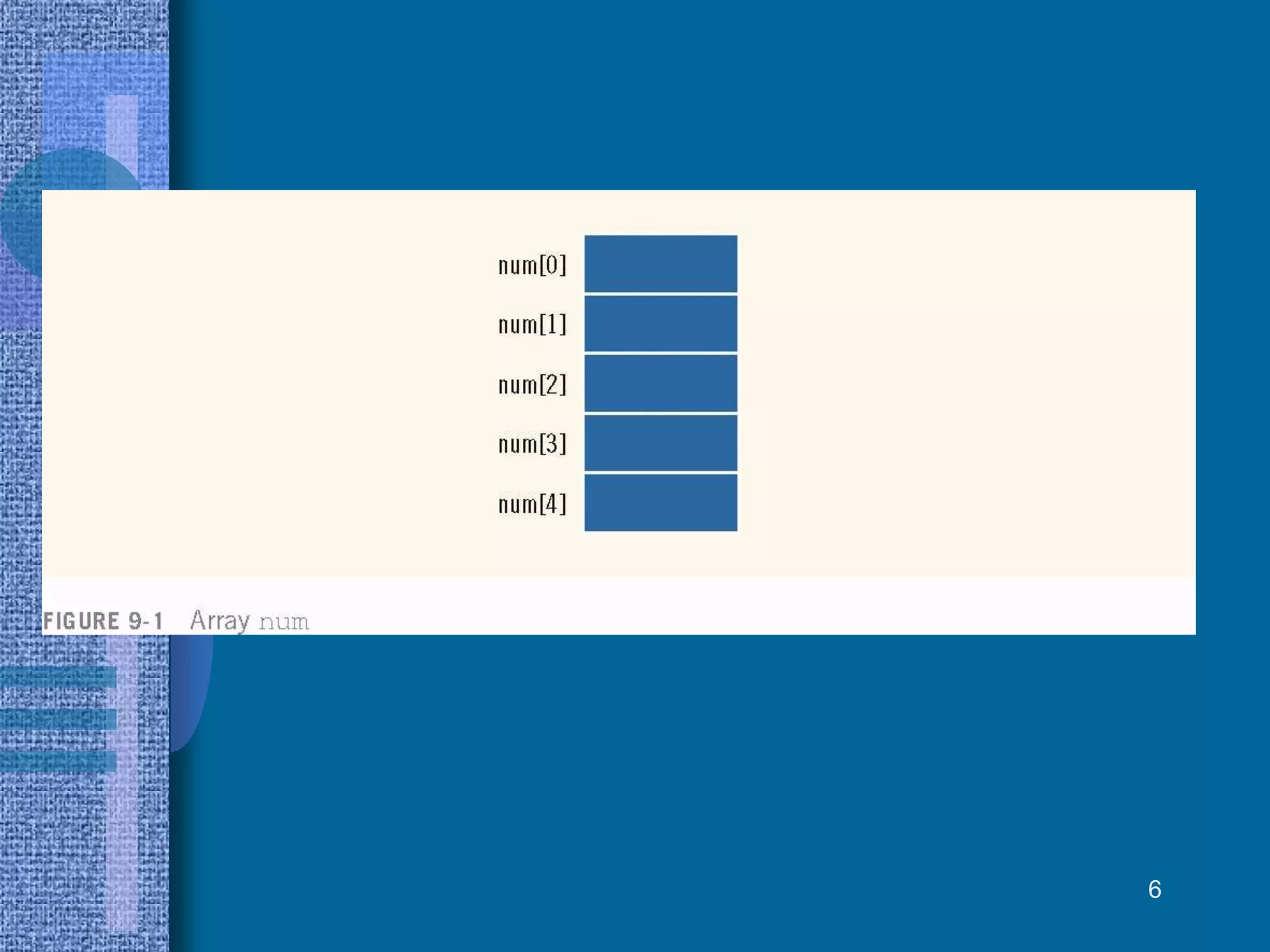
![Accessing Array Components
• The general form (syntax) of accessing an array
component is:
arrayName[indexExp]
where indexExp, called index, is any expression whose
value is a nonnegative integer
• Index value specifies the position of the
component in the array
• The [] operator is called the array
subscripting operator
• The array index always starts at 0 7](https://image.slidesharecdn.com/array-200408105701/75/Array-7-2048.jpg)
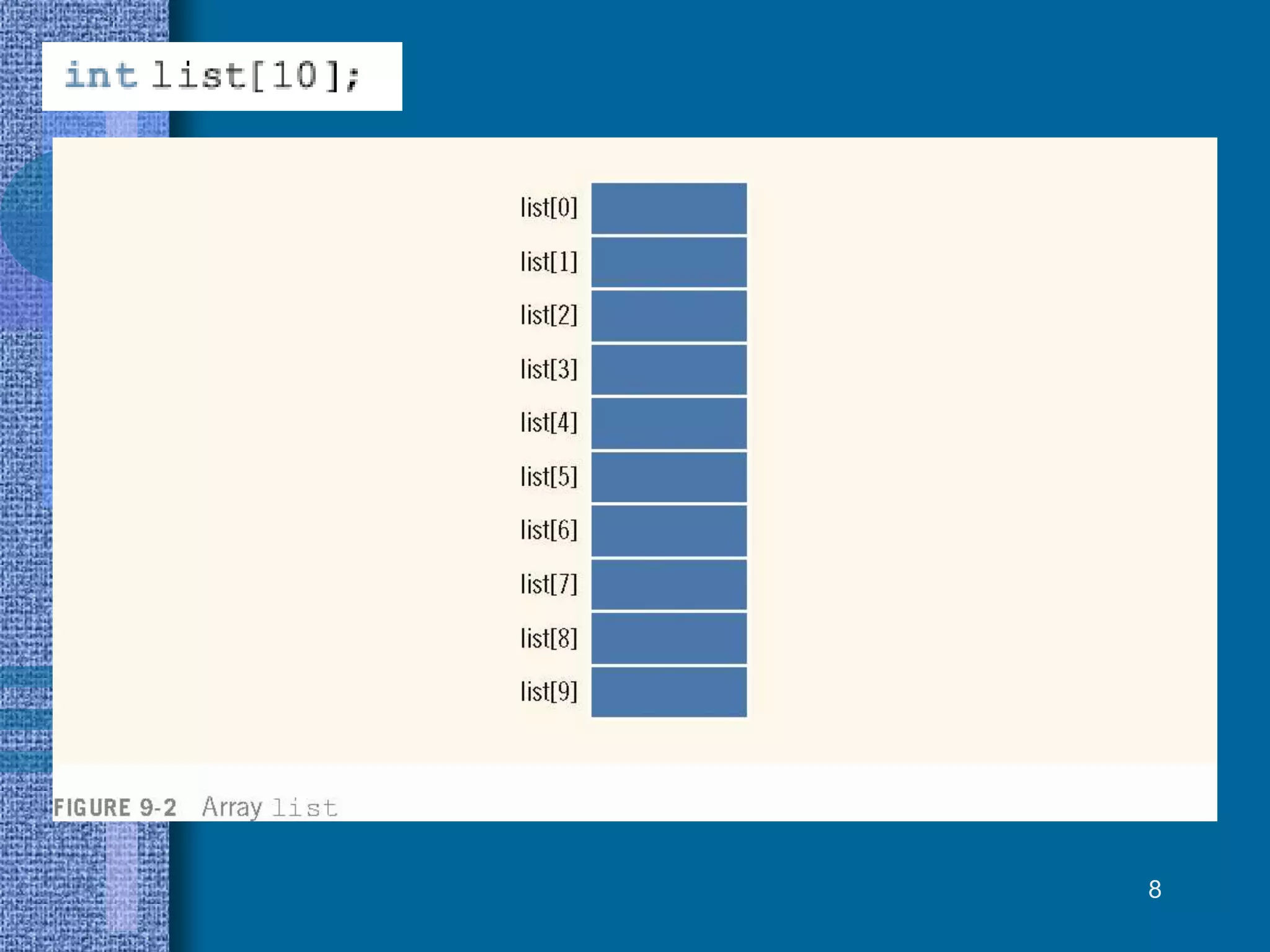
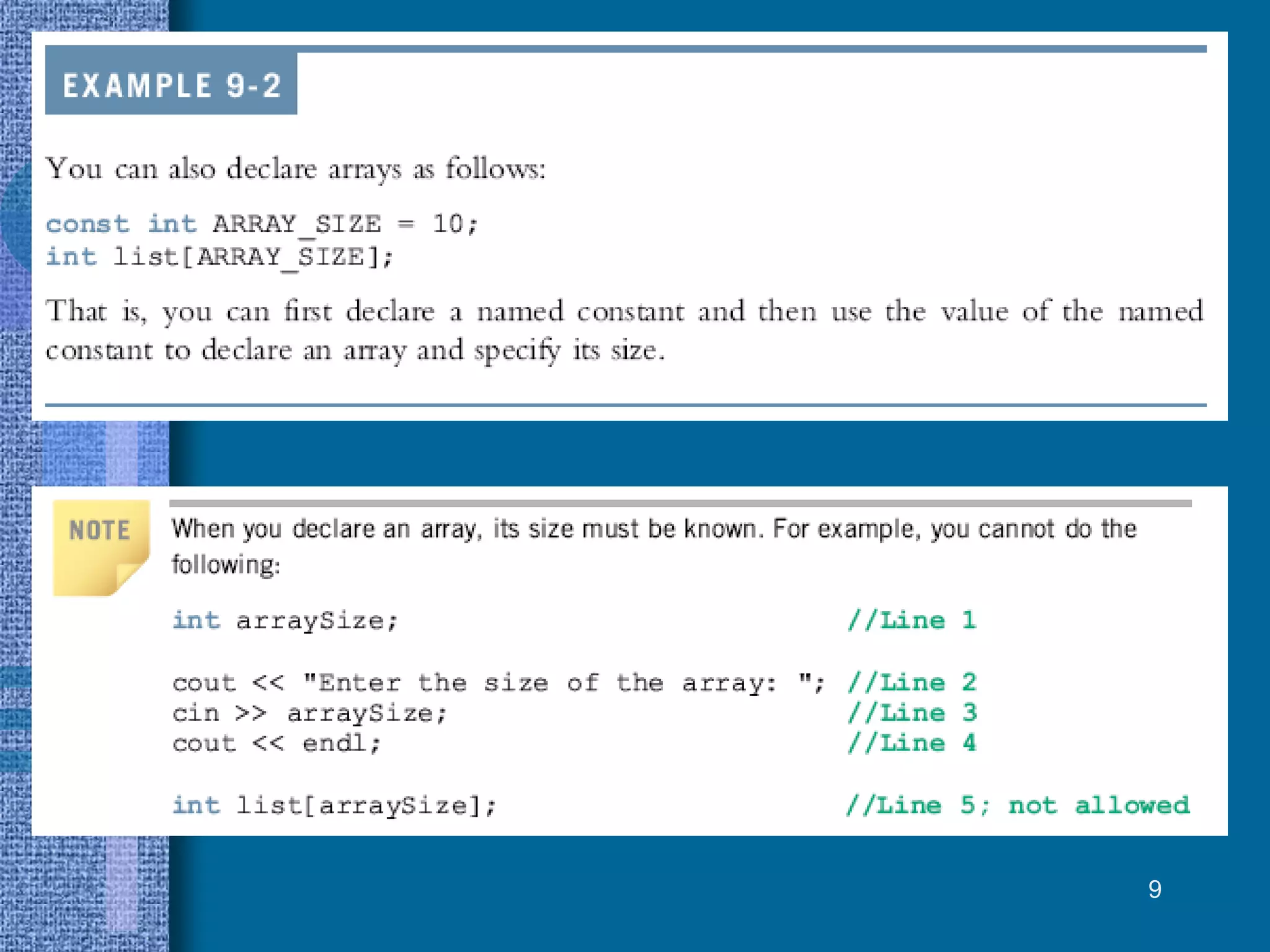
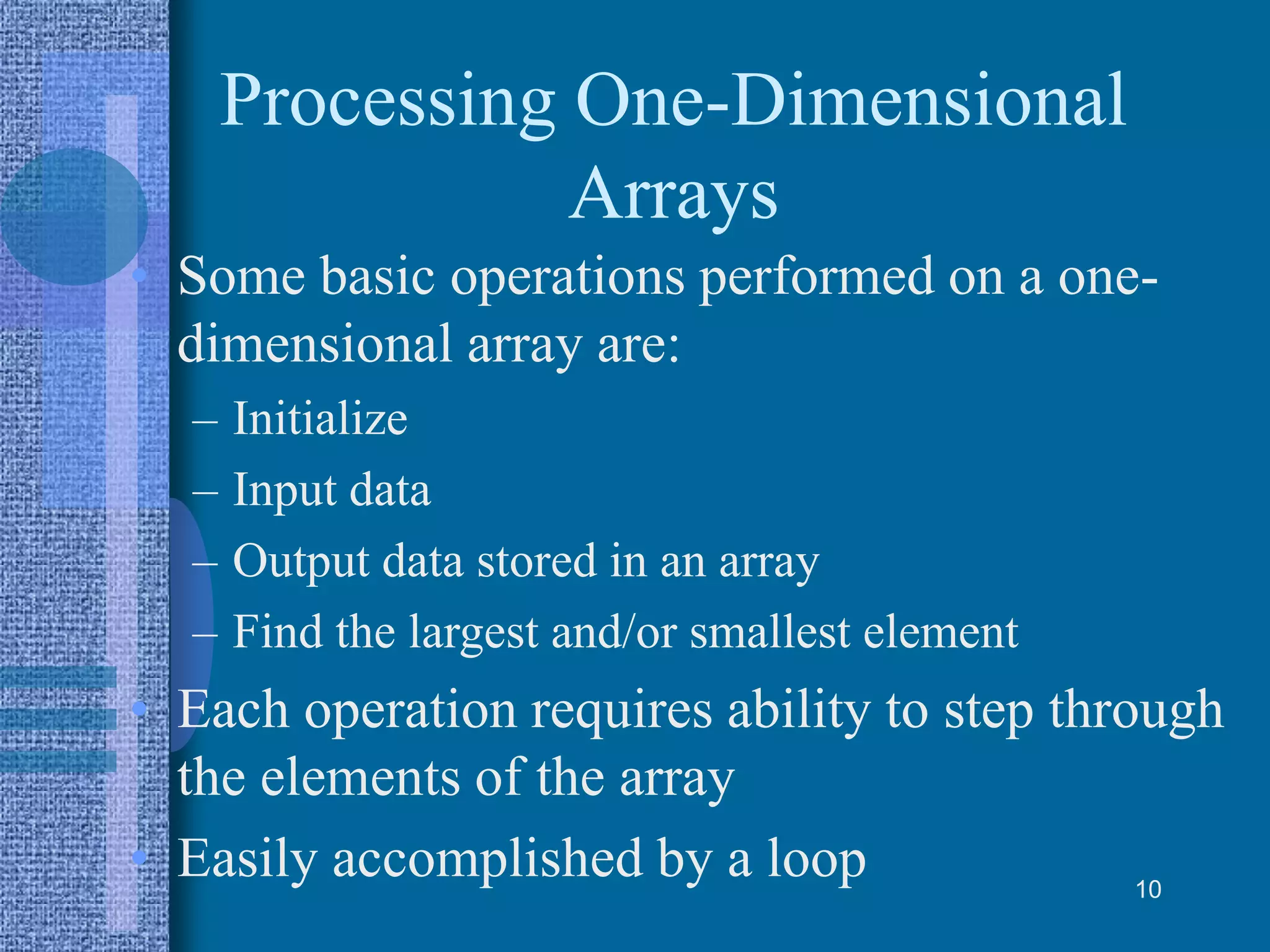
![Accessing Array Components
(continued)
• Consider the declaration
int list[100]; //list is an array
//of the size 100
int i;
• This for loop steps through each element of the
array list starting at the first element
for (i = 0; i < 100; i++) //Line 1
//process list[i] //Line 2 11](https://image.slidesharecdn.com/array-200408105701/75/Array-11-2048.jpg)
![Accessing Array Components
(continued)
• If processing list requires inputting data into
list
– The statement in Line 2 takes the from of an
input statement, such as the cin statement
for (i = 0; i < 100; i++) //Line 1
cin >> list[i];
12](https://image.slidesharecdn.com/array-200408105701/75/Array-12-2048.jpg)

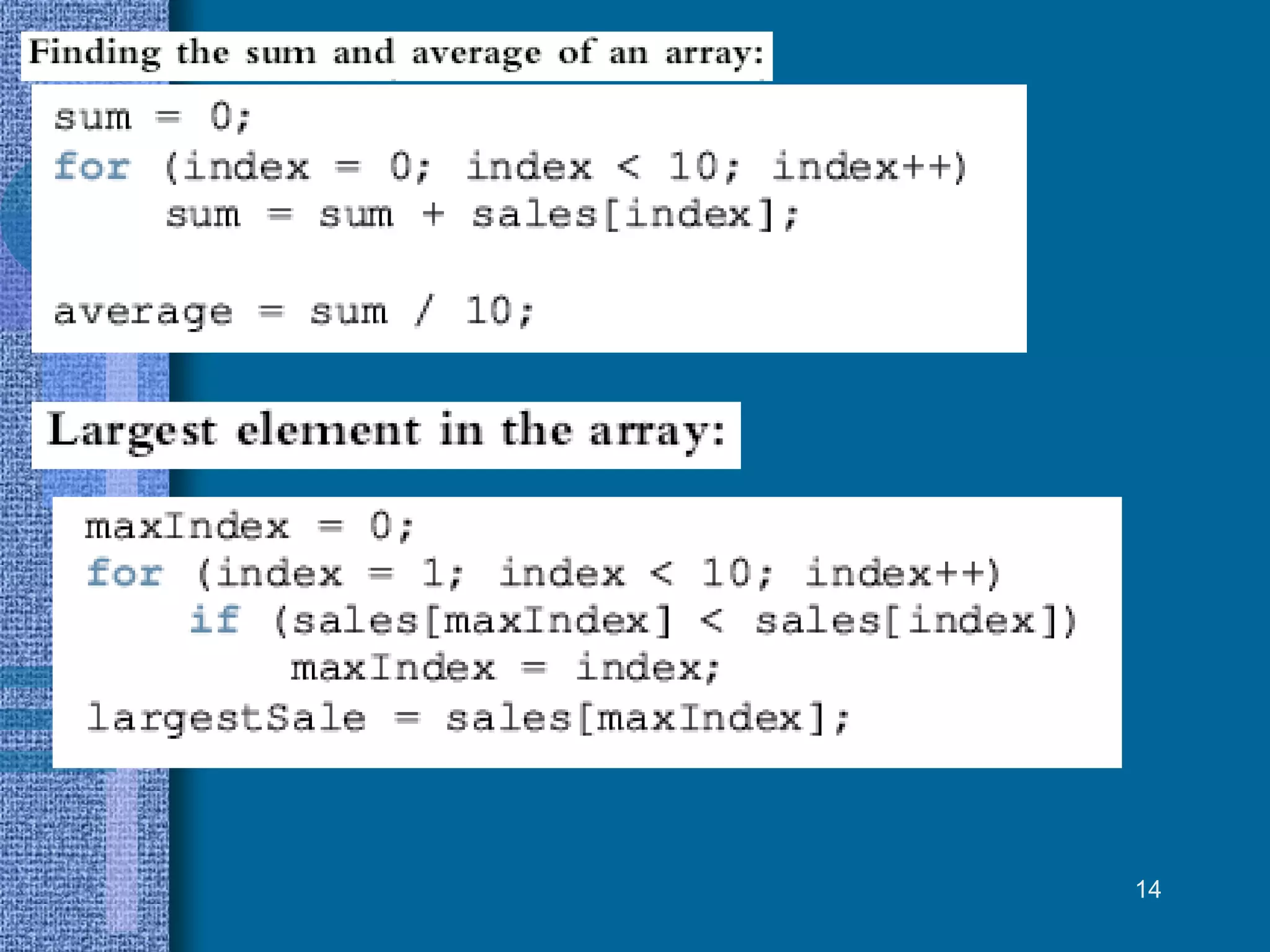
![Array Index Out of Bounds
• If we have the statements:
double num[10];
int i;
• The component num[i] is a valid index if i
= 0, 1, 2, 3, 4, 5, 6, 7, 8, or 9
• The index of an array is in bounds if the
index >=0 and the index <=
ARRAY_SIZE-1
15](https://image.slidesharecdn.com/array-200408105701/75/Array-15-2048.jpg)
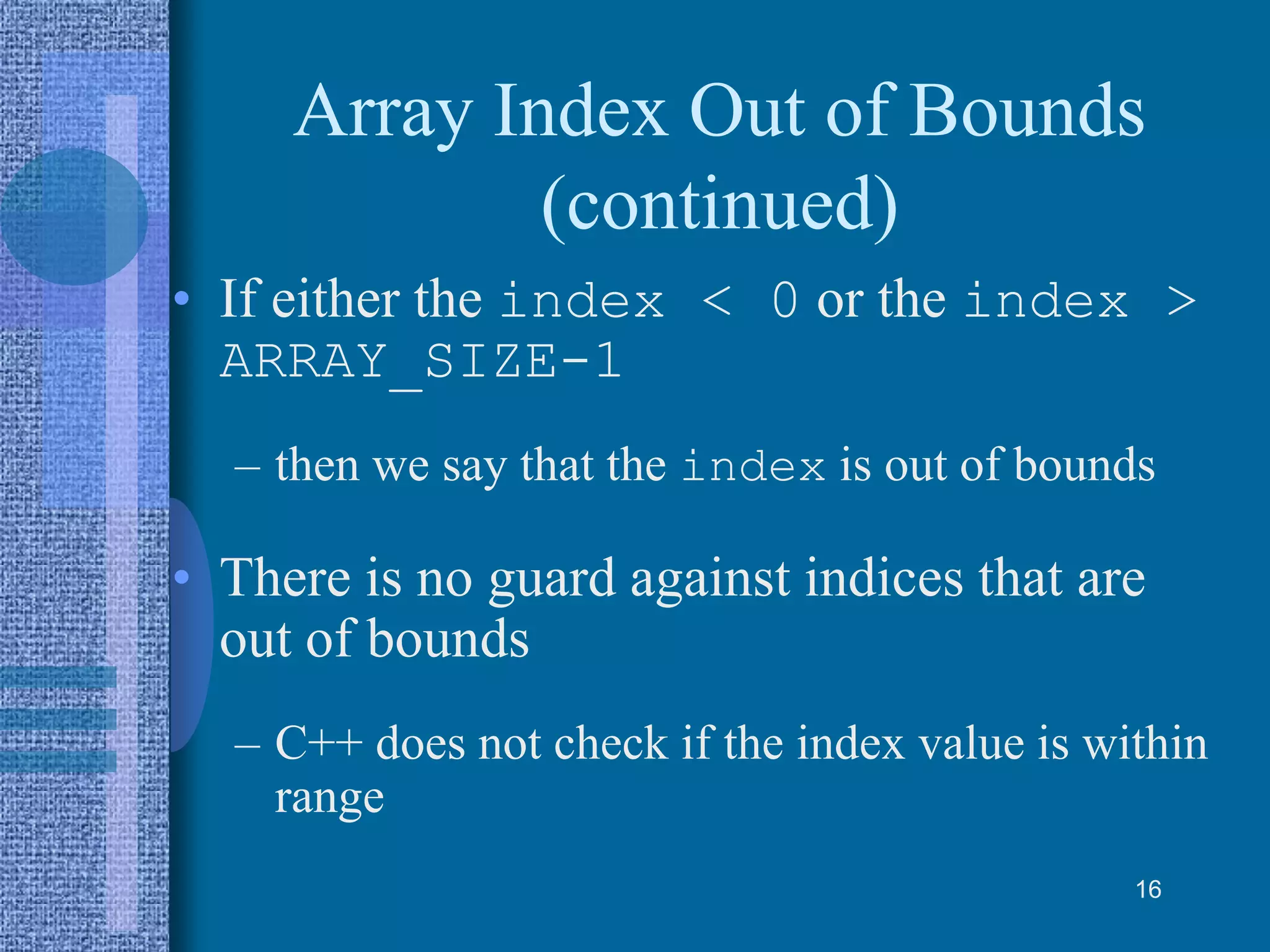
![Array Initialization
• As with simple variables
– Arrays can be initialized while they are being declared
• When initializing arrays while declaring them
– Not necessary to specify the size of the array
• Size of array is determined by the number of initial values in
the braces
• For example:
double sales[] = {12.25, 32.50, 16.90, 23,
45.68};
17](https://image.slidesharecdn.com/array-200408105701/75/Array-17-2048.jpg)
![Partial Initialization
• The statement
int list[10] = {0};
declares list to be an array of 10 components and
initializes all components to zero
• The statement
int list[10] = {8, 5, 12};
declares list to be an array of 10 components,
initializes list[0] to 8, list[1] to 5, list[2] to
12 and all other components are initialized to 0
18](https://image.slidesharecdn.com/array-200408105701/75/Array-18-2048.jpg)
![Partial Initialization (continued)
• The statement
int list[] = {5, 6, 3};
declares list to be an array of 3 components and
initializes list[0] to 5, list[1] to 6, and list[2] to 3
• The statement
int list[25]= {4, 7};
declares list to be an array of 25 components
– The first two components are initialized to 4 and 7 respectively
– All other components are initialized to 0
19](https://image.slidesharecdn.com/array-200408105701/75/Array-19-2048.jpg)
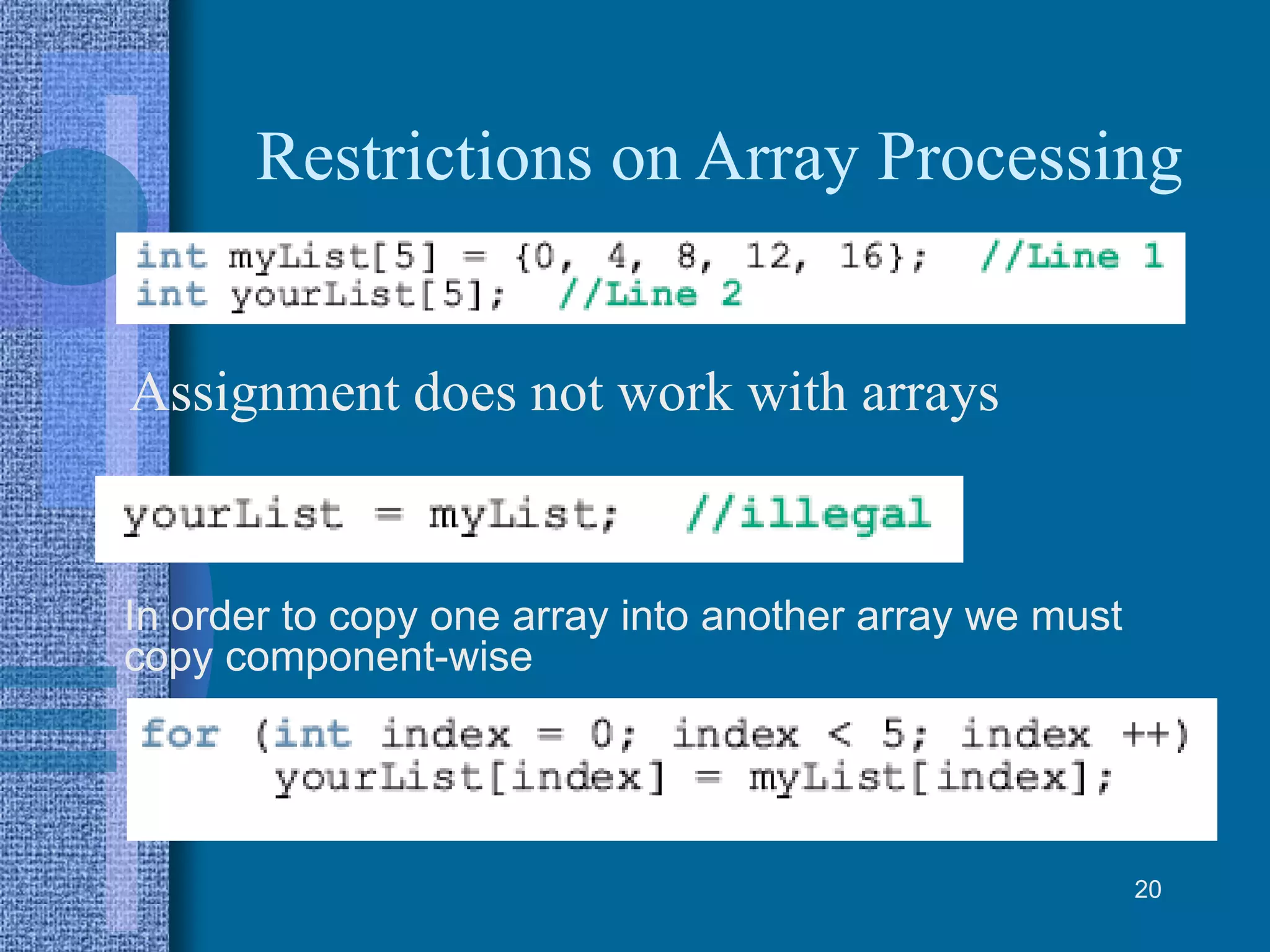
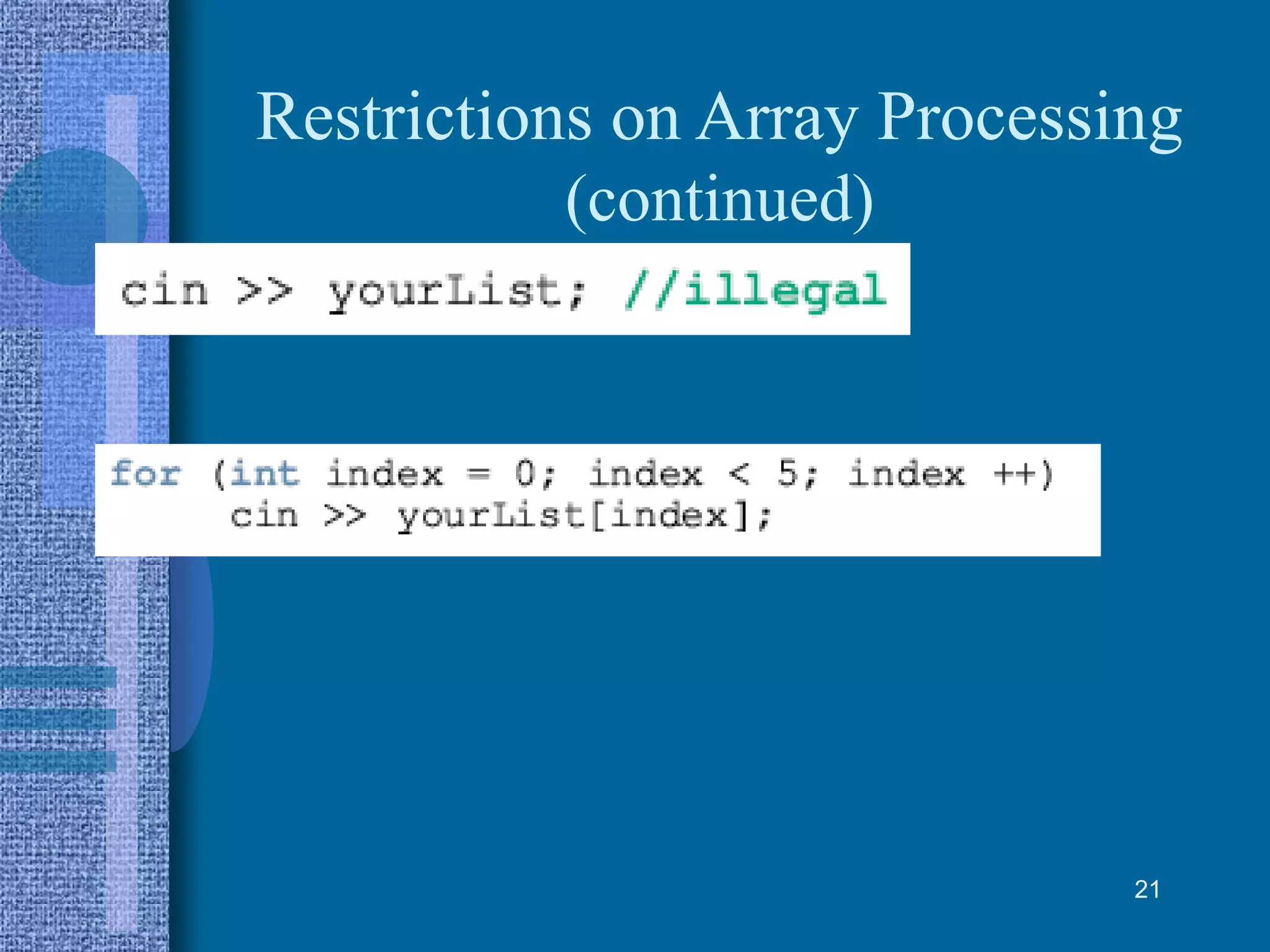
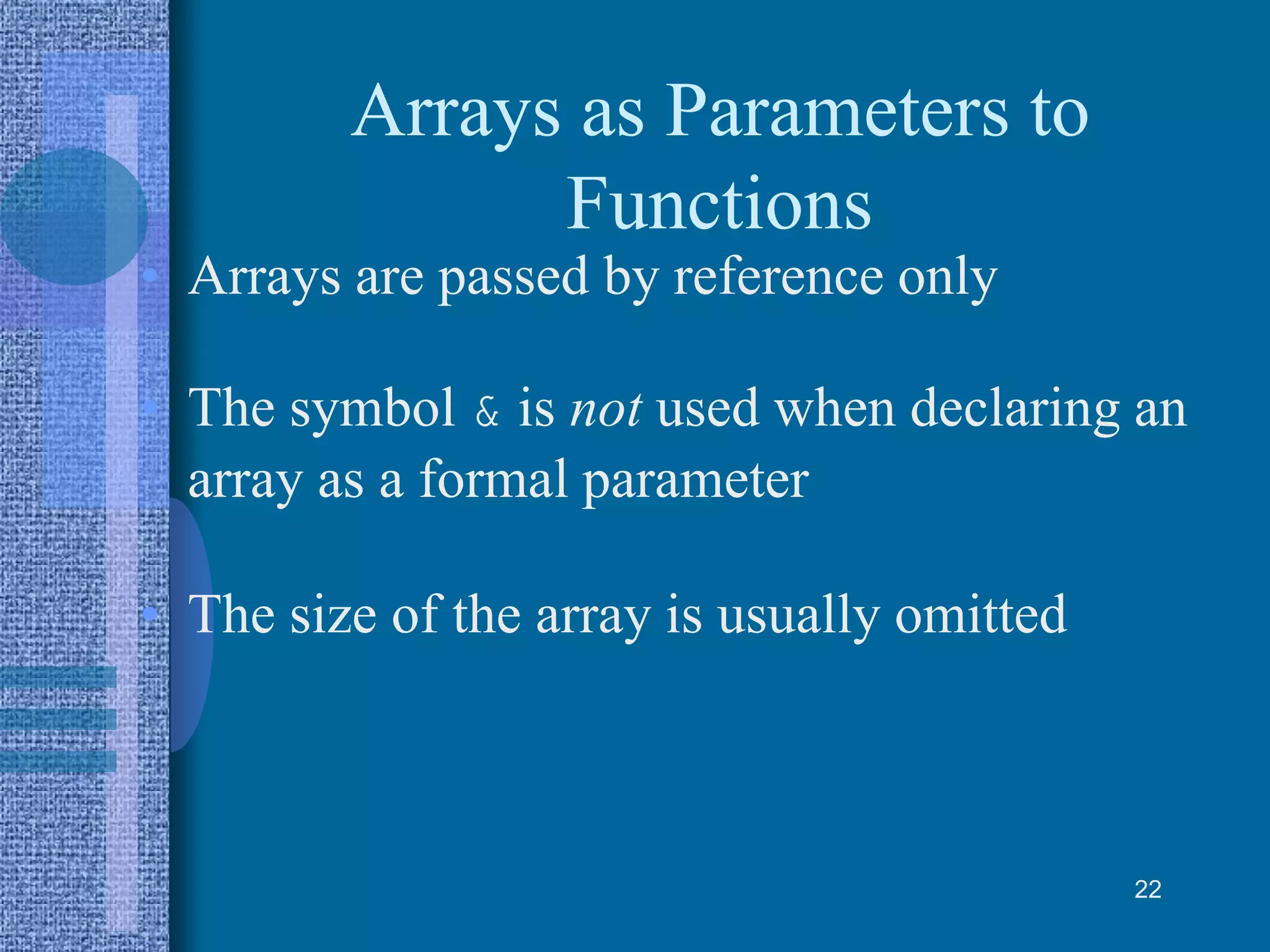
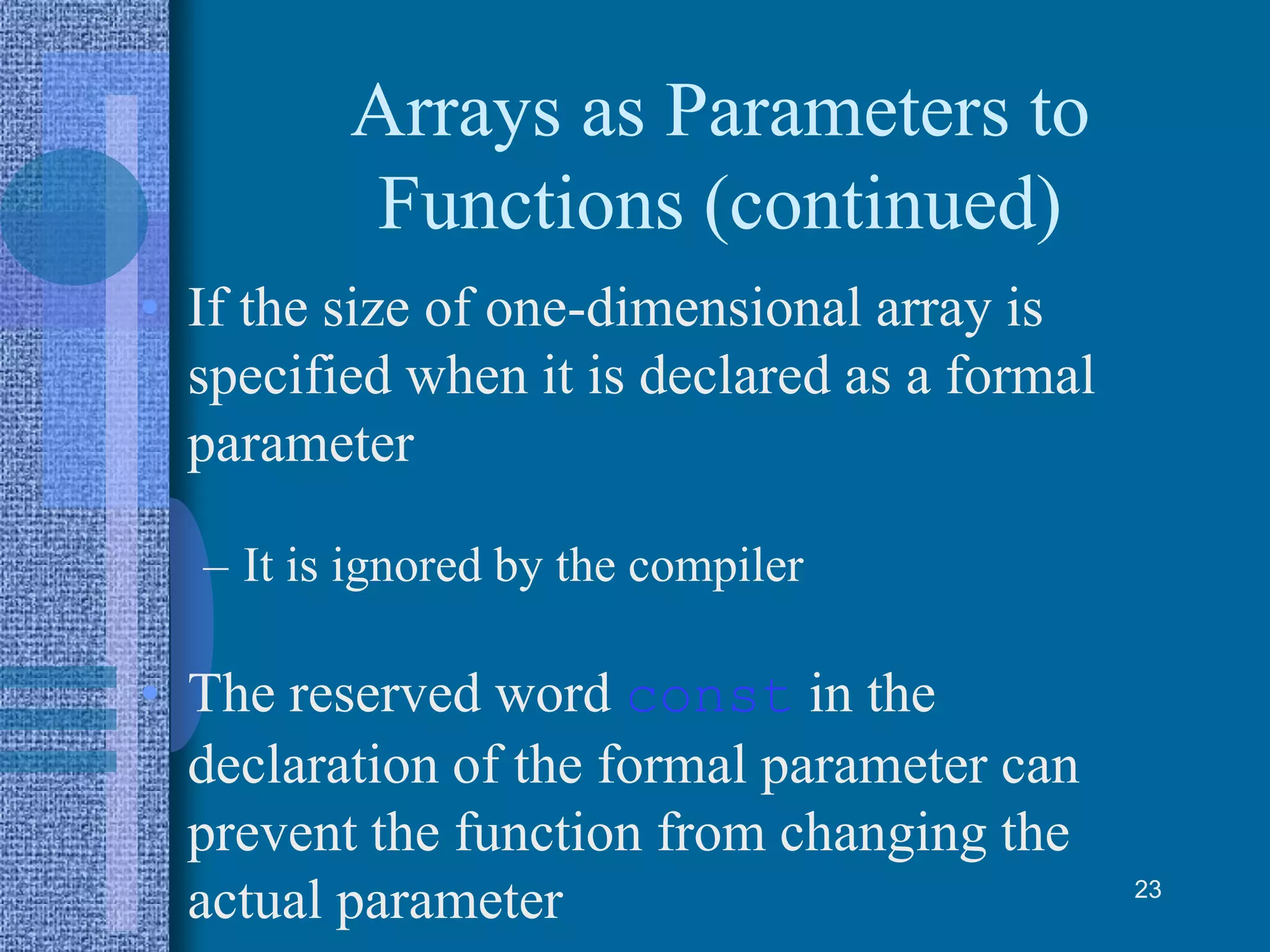
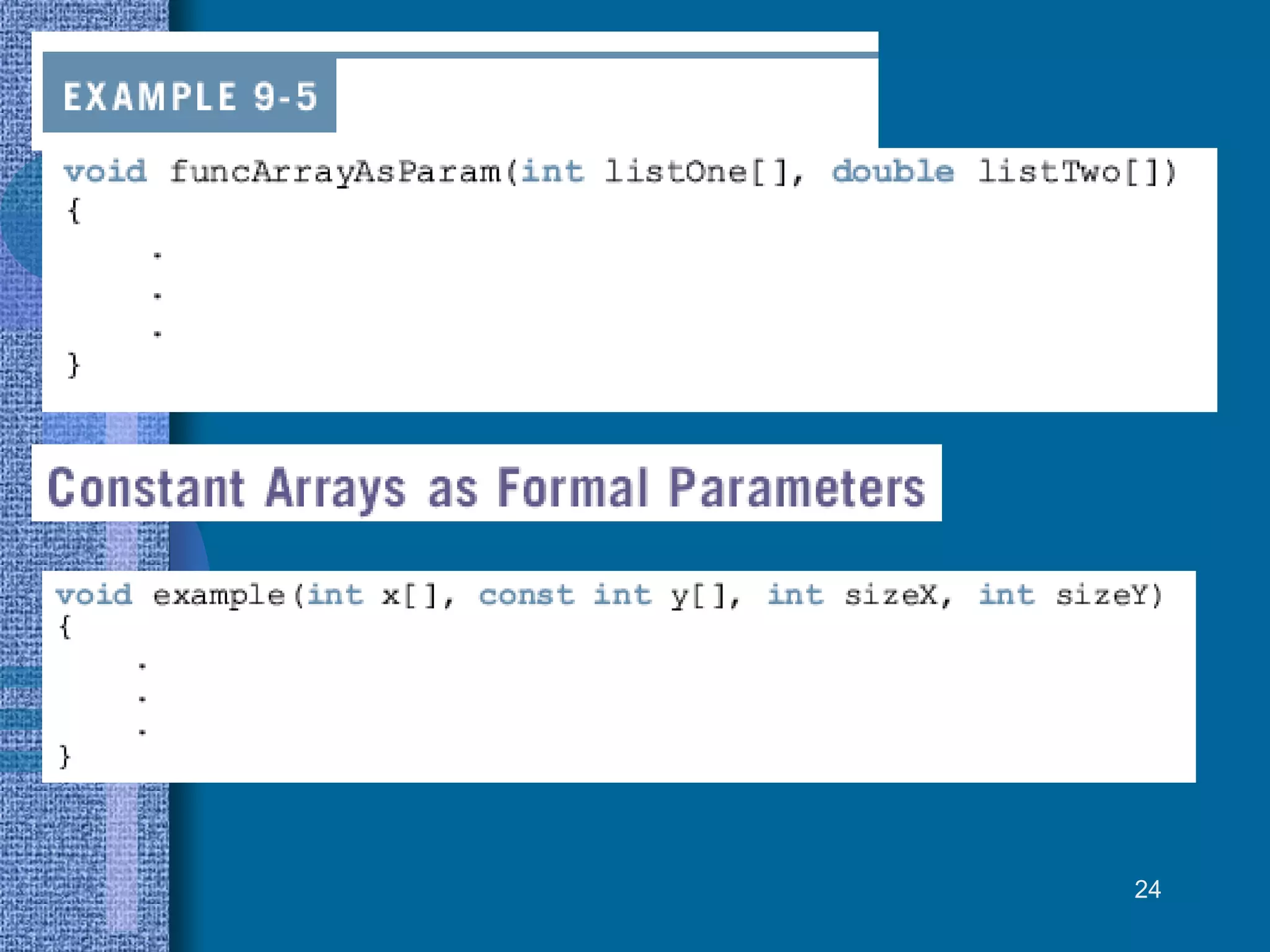


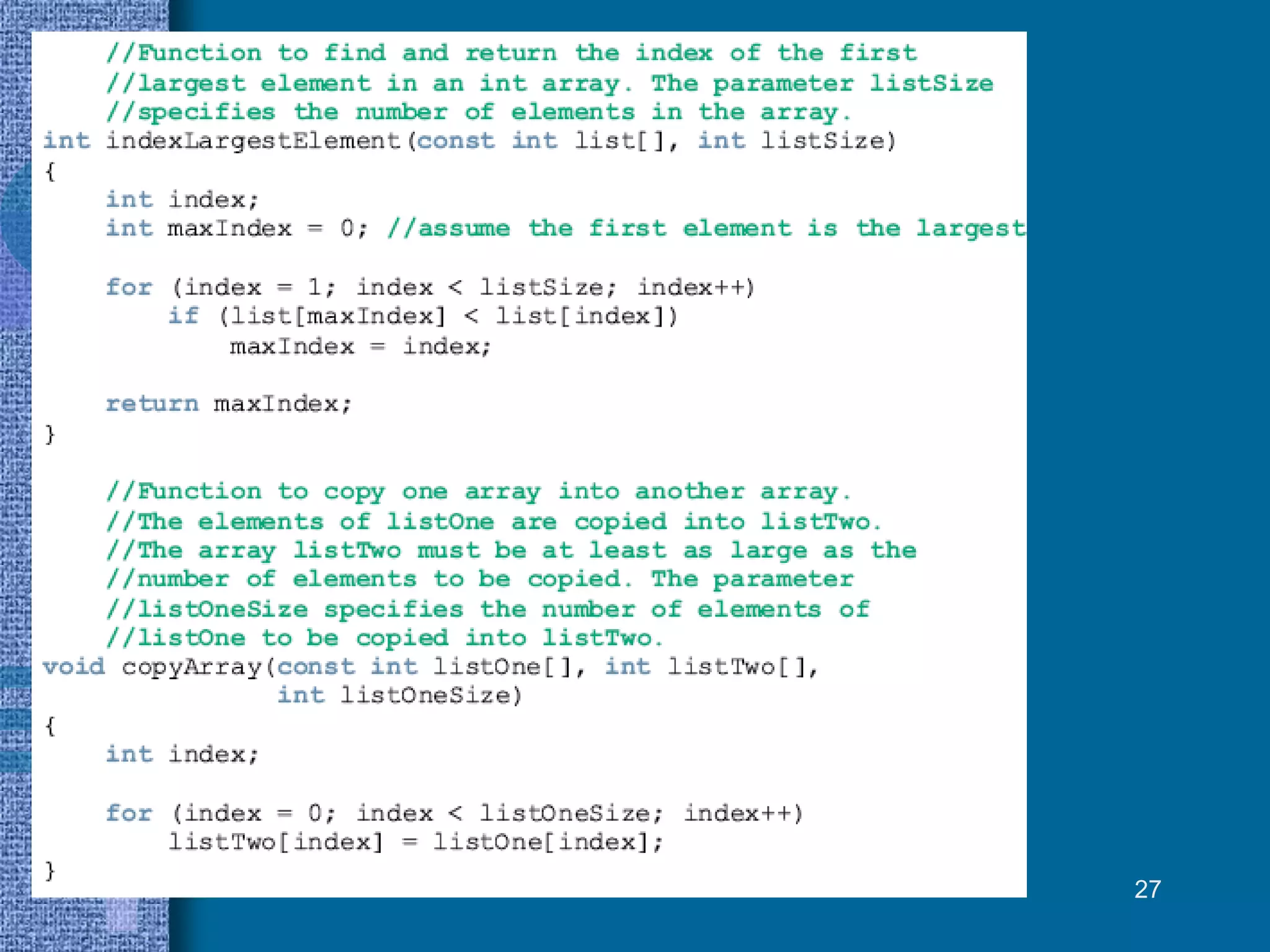
![Base Address of an Array
• The base address of an array is the address, or
memory location of the first array component
• If list is a one-dimensional array
– base address of list is the address of the
component list[0]
• When we pass an array as a parameter
– base address of the actual array is passed to the
formal parameter
• Functions cannot return a value of the type
array
28](https://image.slidesharecdn.com/array-200408105701/75/Array-28-2048.jpg)

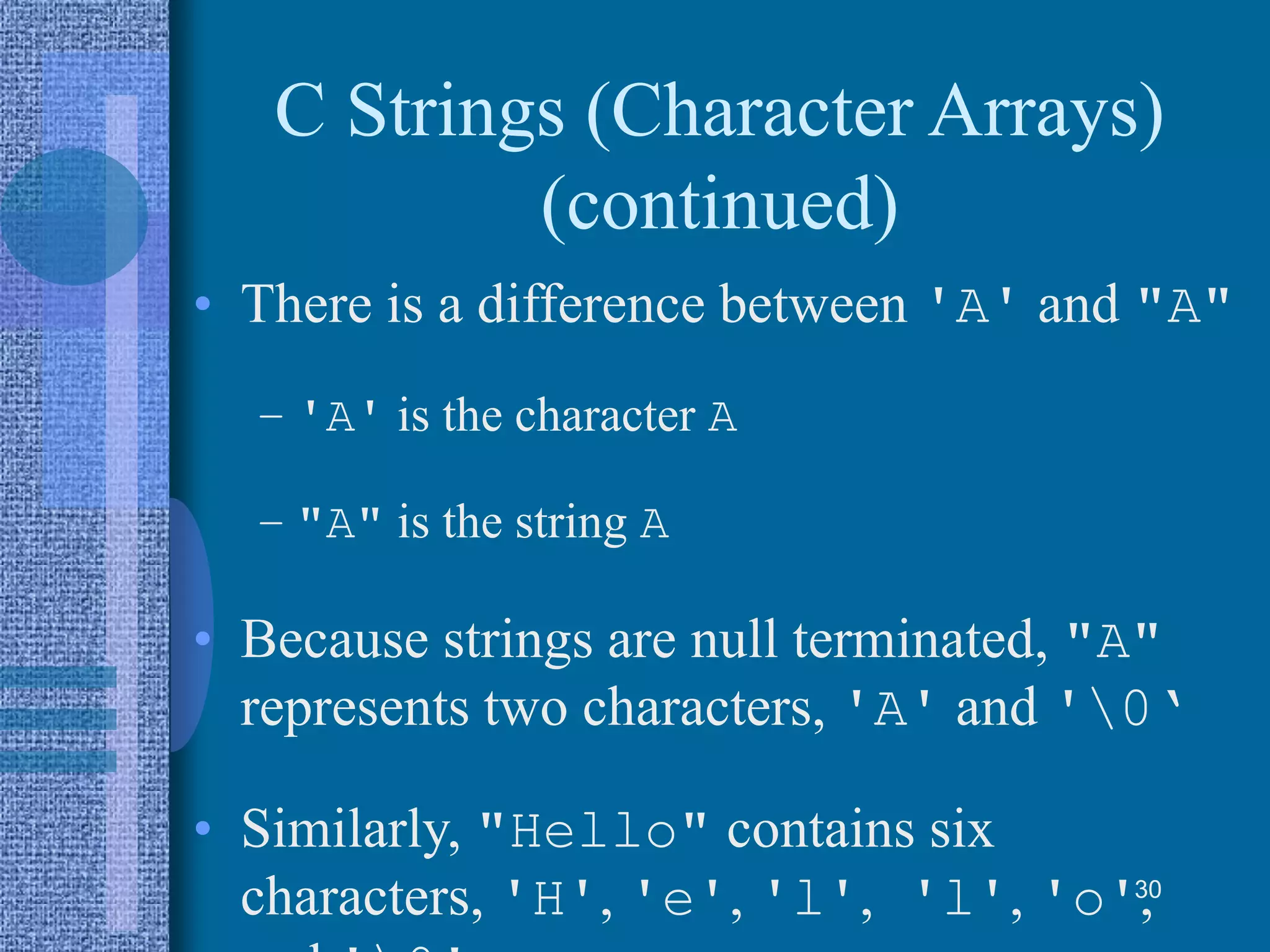
![C Strings (Character Arrays)
(continued)
• Consider the statement
char name[16];
• Because C strings are null terminated and
name has sixteen components
– the largest string that can be stored in name is
15
• If you store a string of length, say 10 in
name
– the first 11 components of name are used and
the last 5 are left unused
31](https://image.slidesharecdn.com/array-200408105701/75/Array-31-2048.jpg)
![C Strings (Character Arrays)
(continued)
• The statement
char name[16] = "John";
declares a string variable name of length 16
and stores "John" in it
• The statement
char name[] = "John";
declares a string variable name of length 5
and stores "John" in it 32](https://image.slidesharecdn.com/array-200408105701/75/Array-32-2048.jpg)
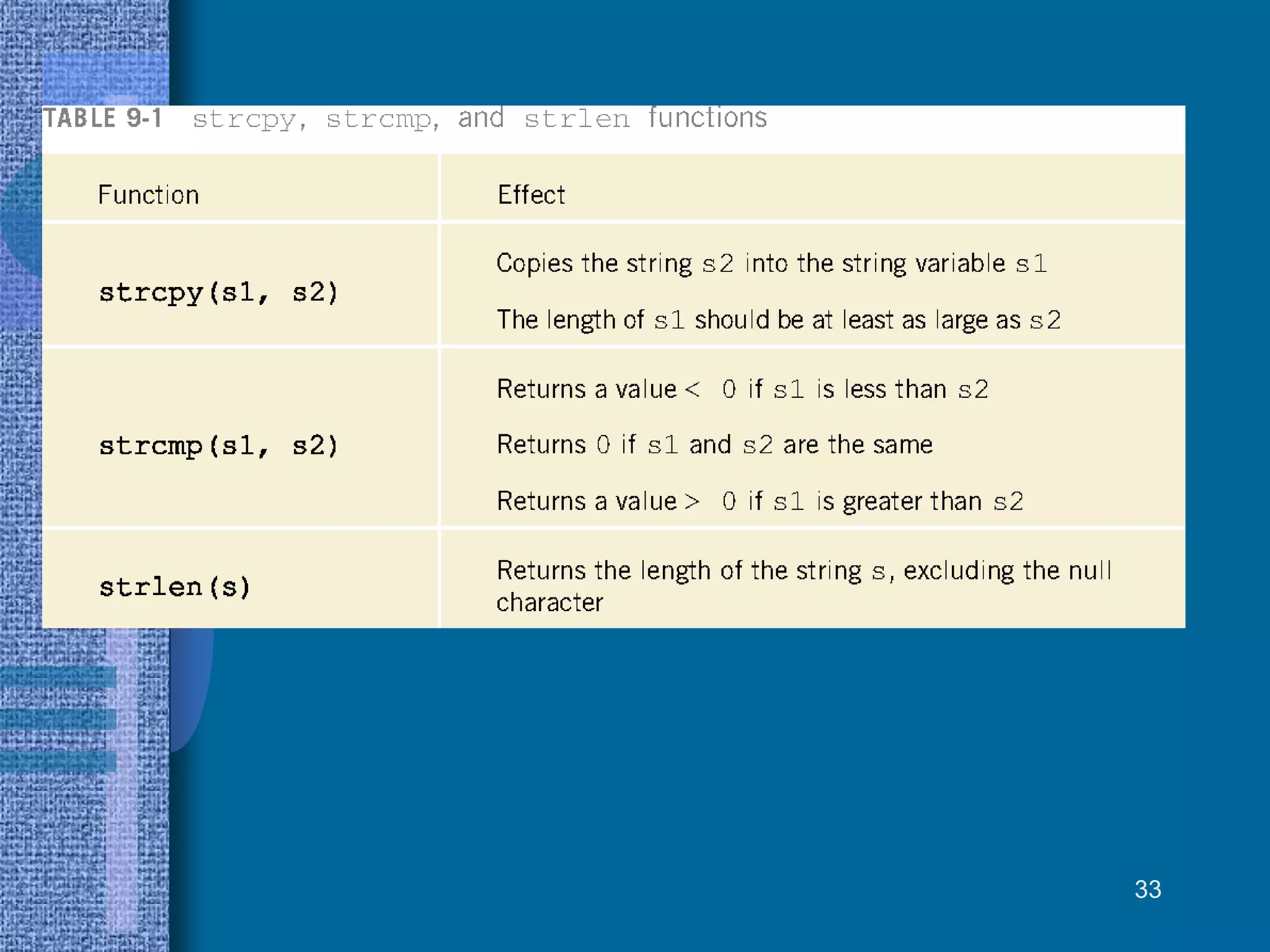
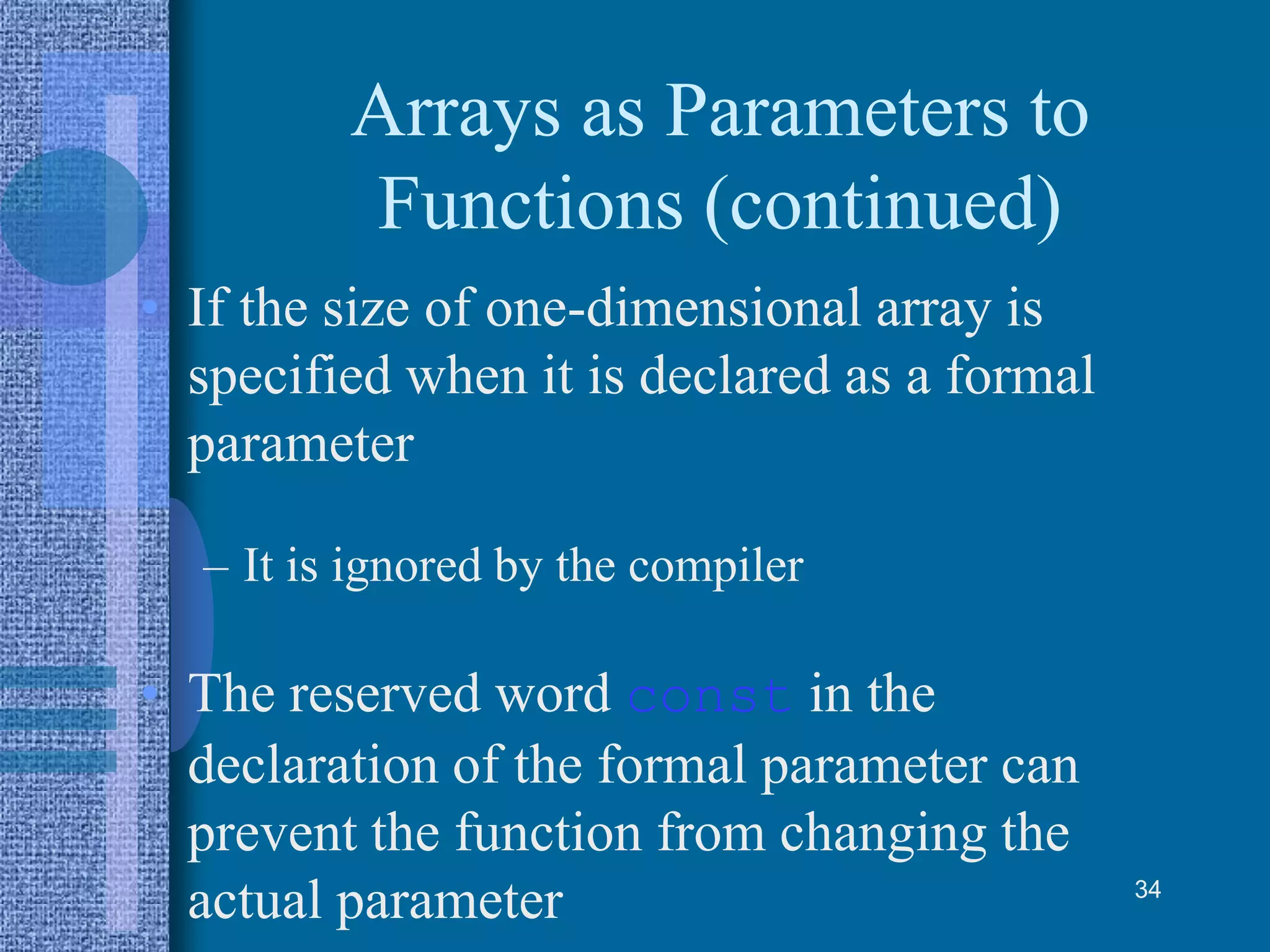
![Parallel Arrays
• Two (or more) arrays are called parallel if
their corresponding components hold
related information
• For example:
int studentId[50];
char courseGrade[50];
35](https://image.slidesharecdn.com/array-200408105701/75/Array-35-2048.jpg)
![Two-Dimensional Arrays
• Two-dimensional Array: a collection of a
fixed number of components arranged in two
dimensions
– All components are of the same type
• The syntax for declaring a two-dimensional
array is:
dataType arrayName[intexp1][intexp2];
where intexp1 and intexp2 are expressions yielding
positive integer values 36](https://image.slidesharecdn.com/array-200408105701/75/Array-36-2048.jpg)

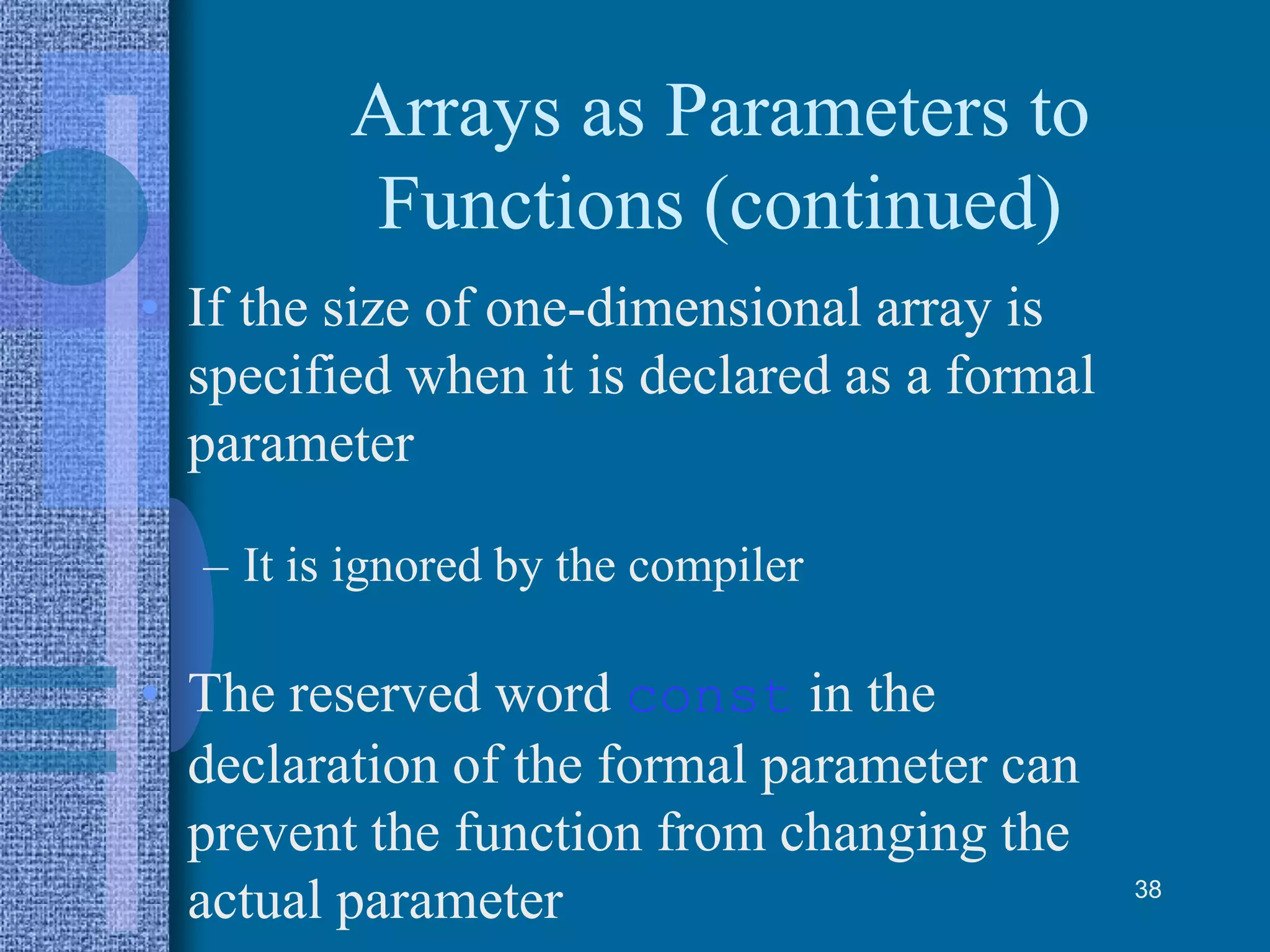

![Accessing Array Components
• The syntax to access a component of a two-
dimensional array is:
arrayName[indexexp1][indexexp2]
where indexexp1 and indexexp2 are
expressions yielding nonnegative integer
values
• indexexp1 specifies the row position and
indexexp2 specifies the column position
40](https://image.slidesharecdn.com/array-200408105701/75/Array-40-2048.jpg)
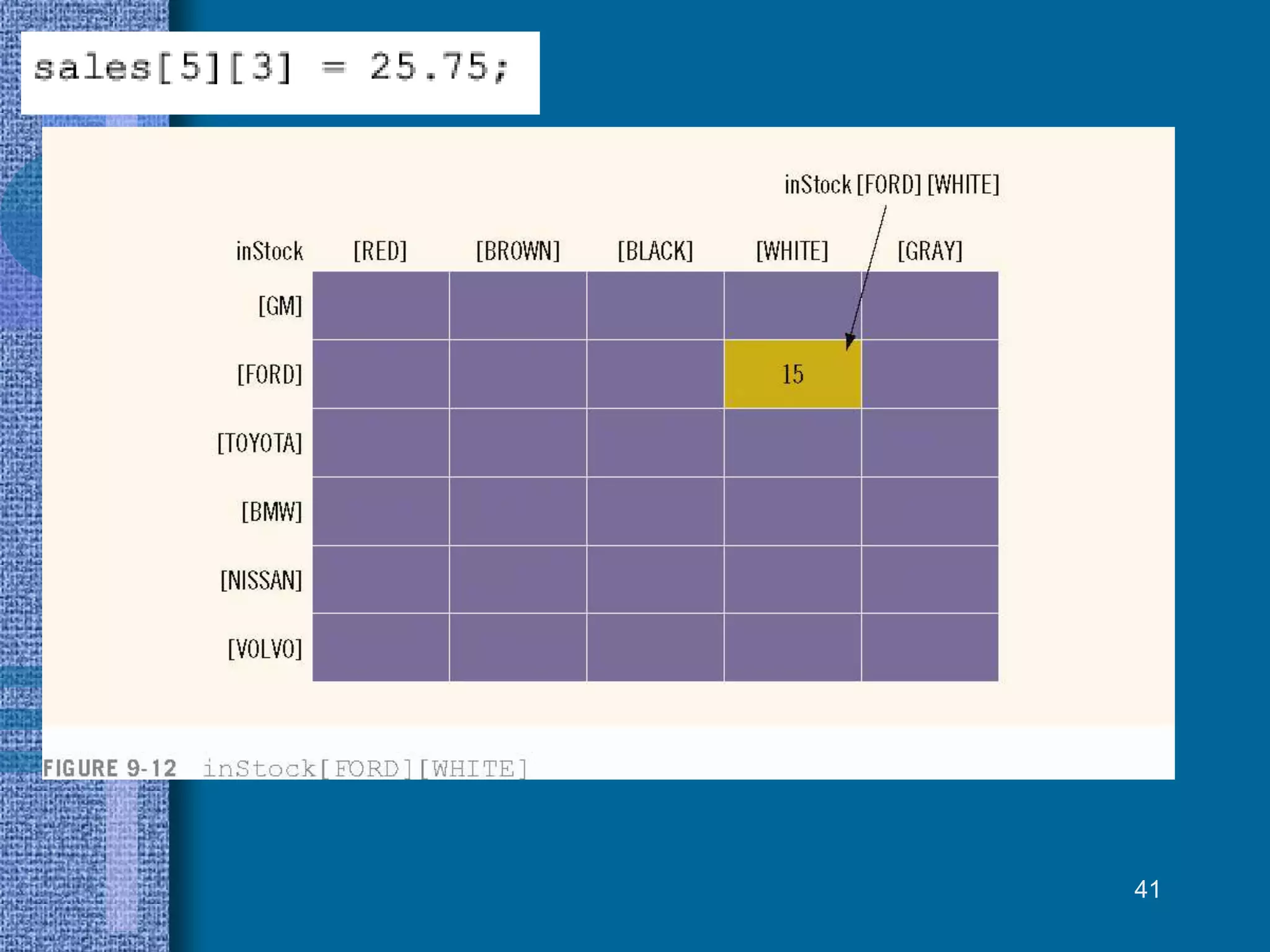
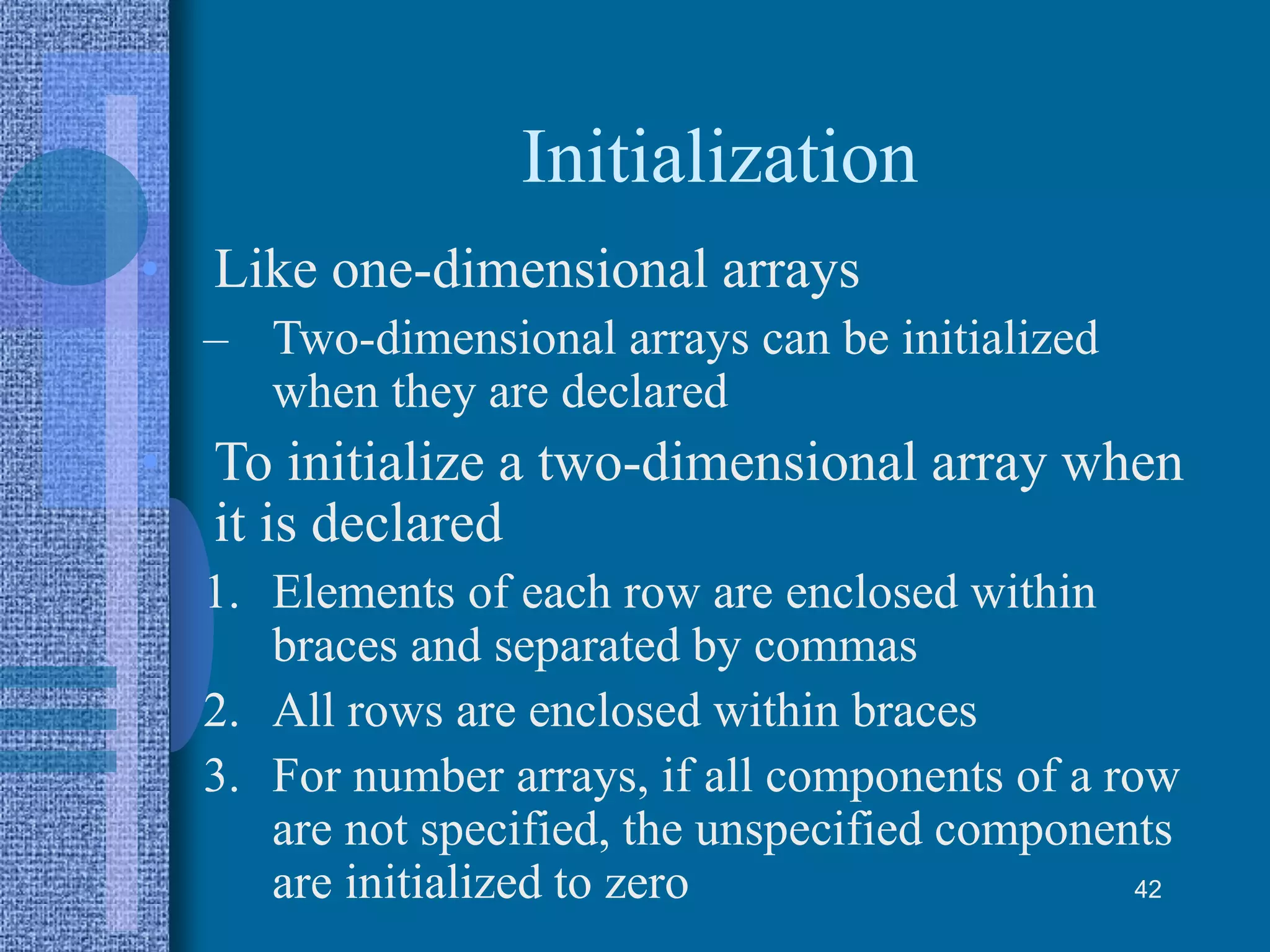

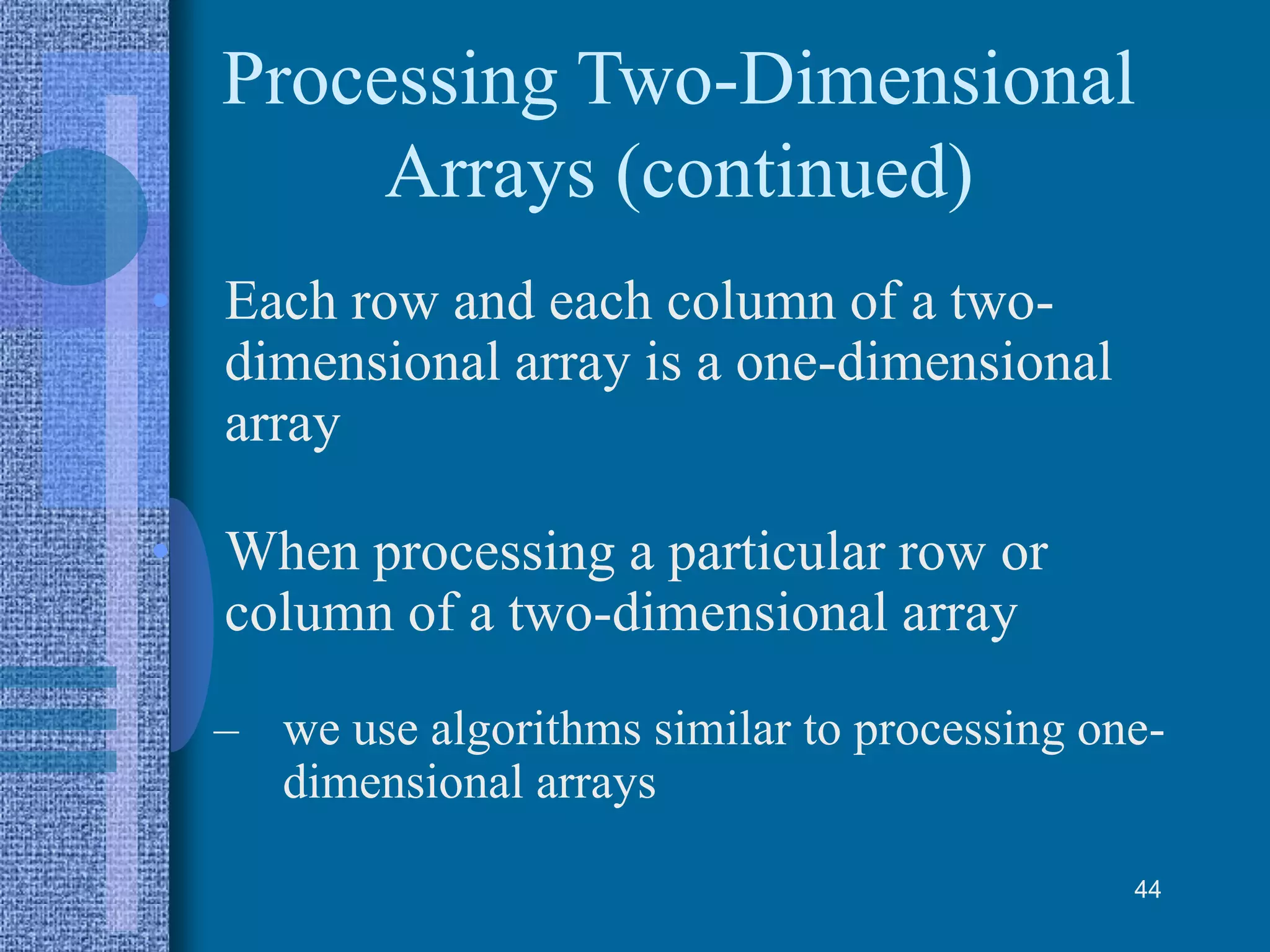
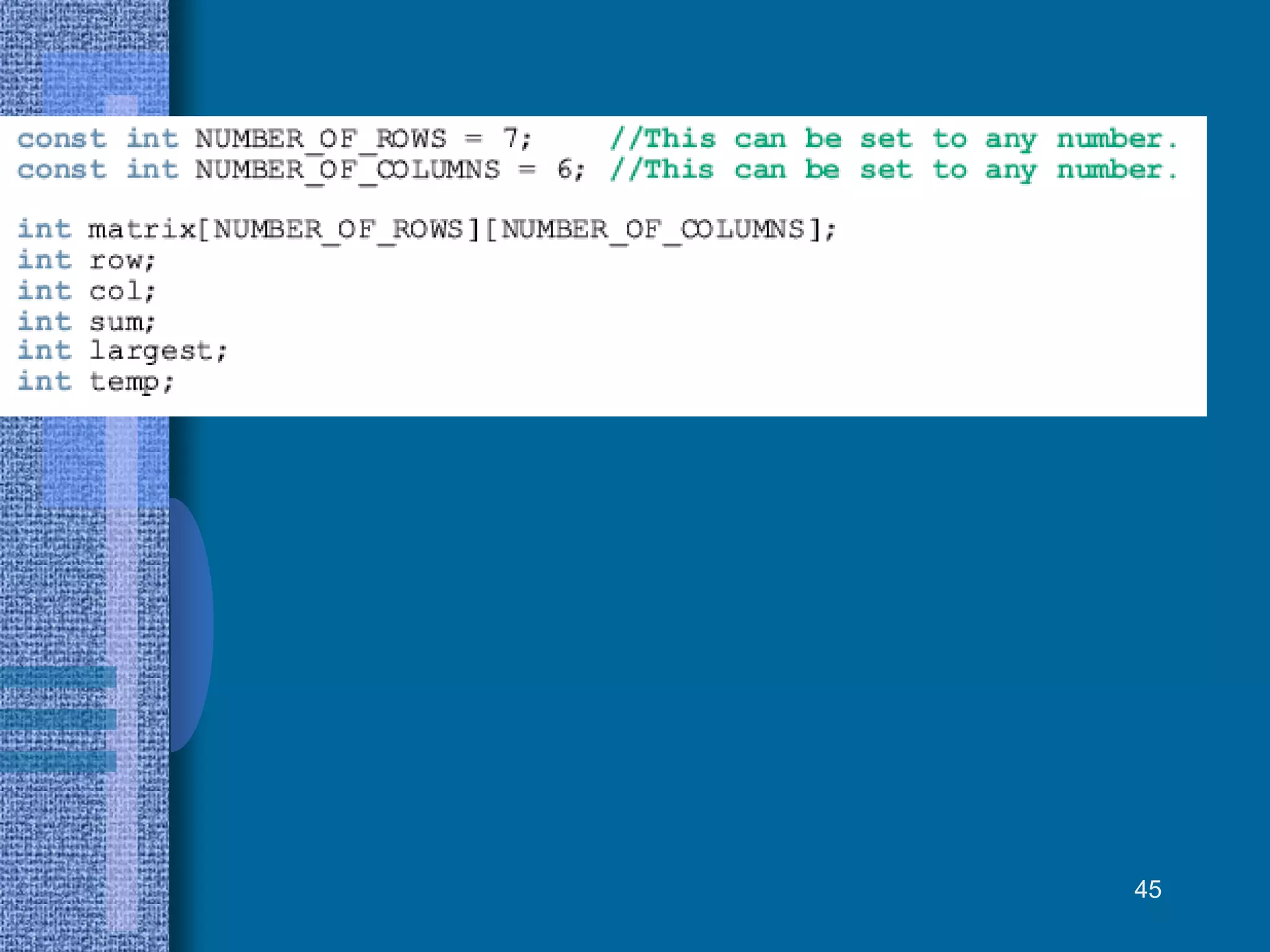
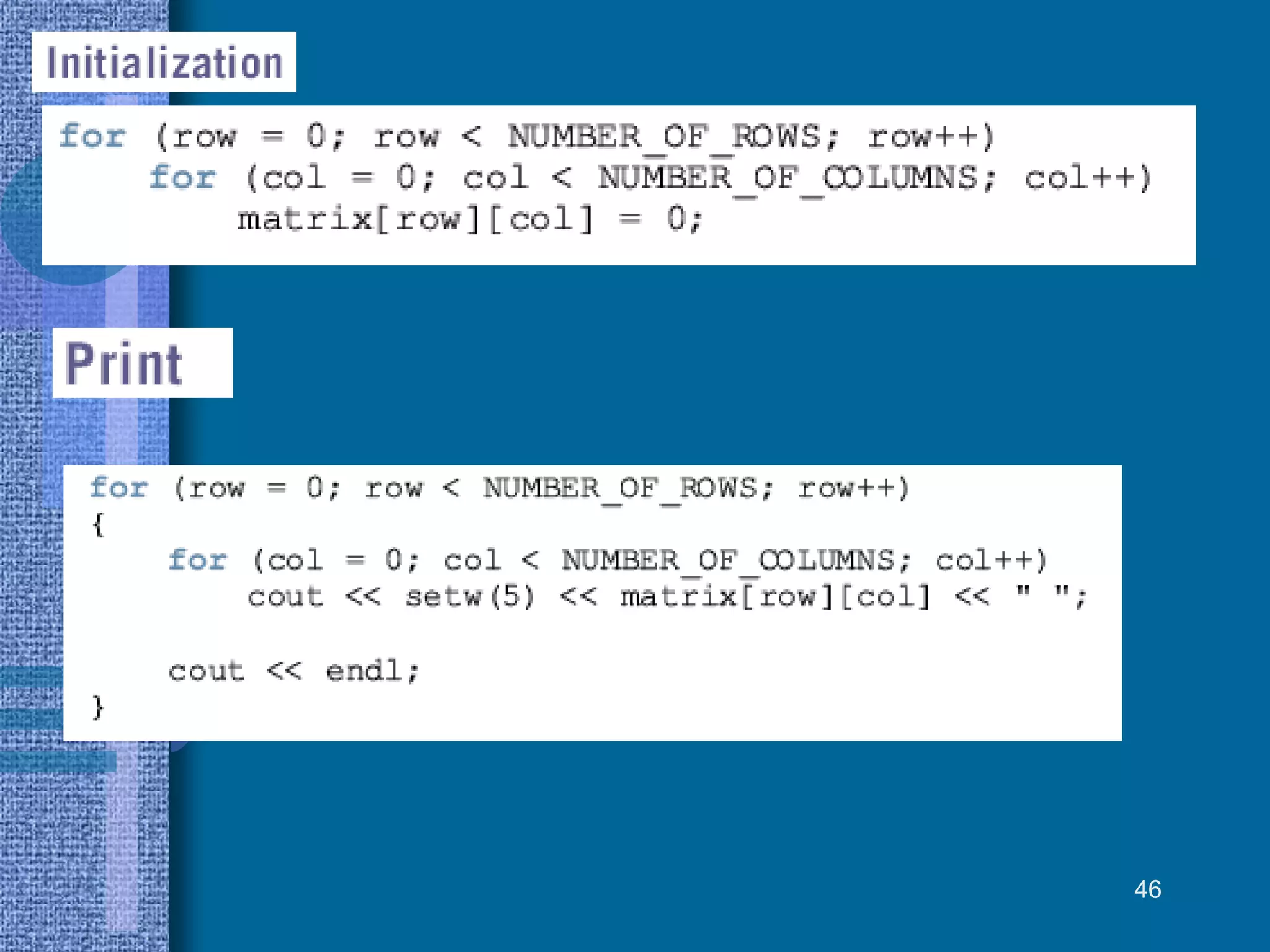
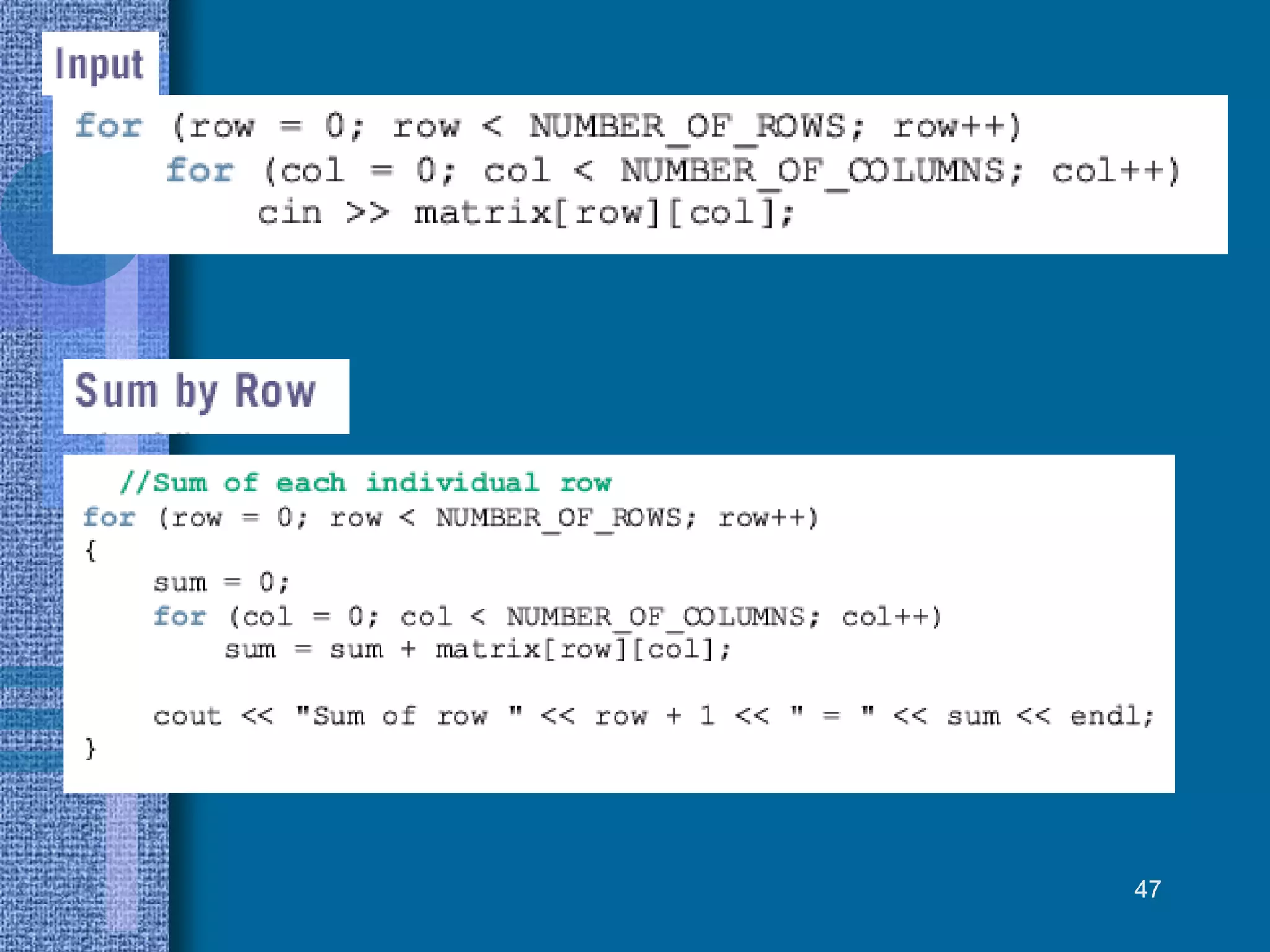
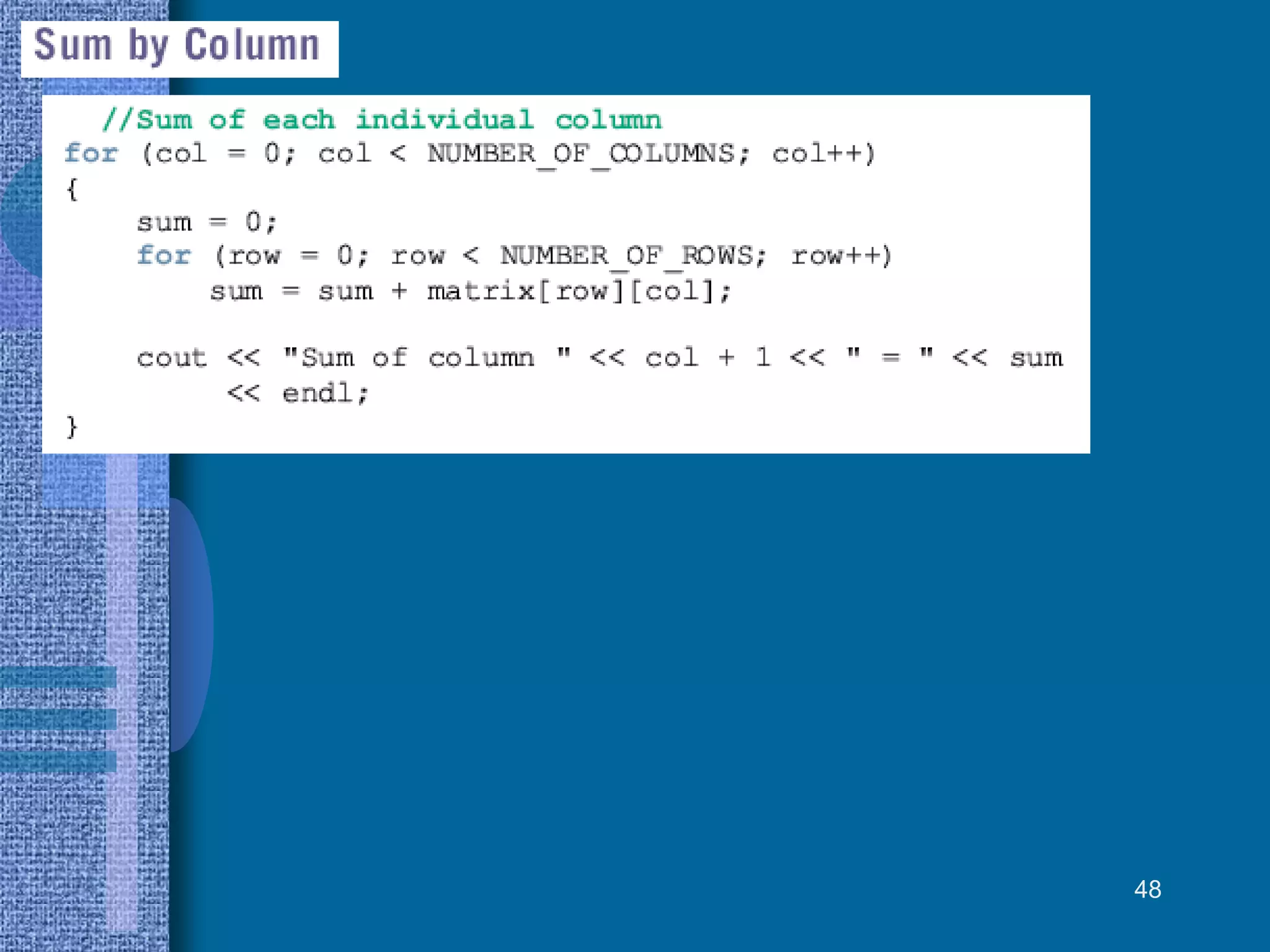
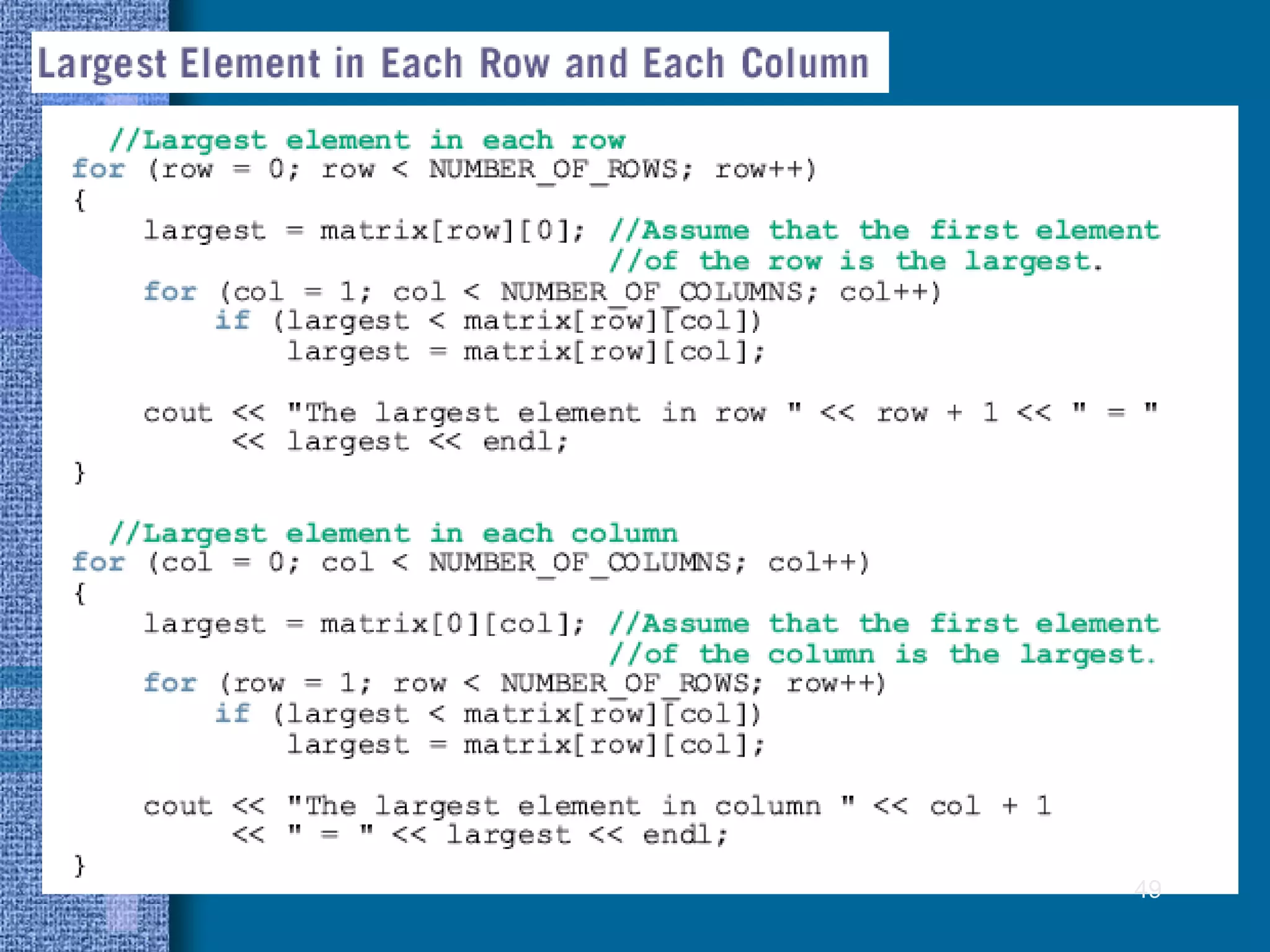
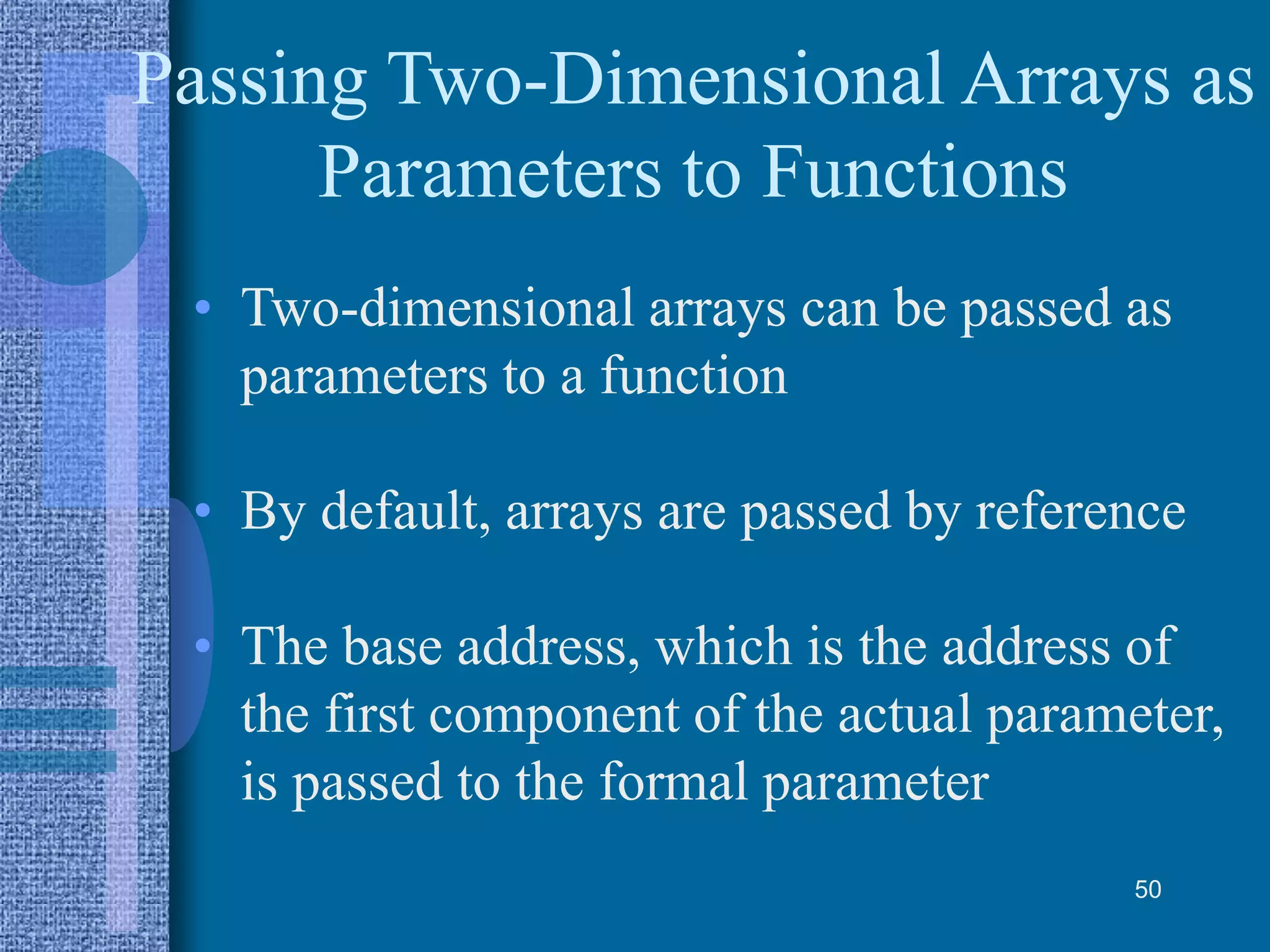

![Multidimensional Arrays
• Multidimensional Array: collection of a fixed
number of elements (called components)
arranged in n dimensions (n >= 1)
• Also called an n-dimensional array
• General syntax of declaring an n-dimensional
array is:
dataType arrayName[intExp1][intExp2]...[intExpn];
where intExp1, intExp2, … are constant
expressions yielding positive integer values52](https://image.slidesharecdn.com/array-200408105701/75/Array-52-2048.jpg)
![Multidimensional Arrays
(continued)
• The syntax for accessing a component of an n-
dimensional array is:
arrayName[indexExp1][indexExp2]...[indexExpn]
where indexExp1,indexExp2,..., and
indexExpn are expressions yielding
nonnegative integer values
• indexExpi gives the position of the array
component in the ith dimension
53](https://image.slidesharecdn.com/array-200408105701/75/Array-53-2048.jpg)
